
About UsThe Numismatic Bibliomania Society is a non-profit organization devoted to the study and enjoyment of numismatic literature. For more information please see our web site at coinbooks.org SubscriptionsThose wishing to become new E-Sylum subscribers (or wishing to Unsubscribe) can go to the following web page link MembershipThere is a membership application available on the web site Membership Application To join, print the application and return it with your check to the address printed on the application. Membership is only $20 to addresses in the U.S., $25 for First Class mail, and $30 elsewhere. For those without web access, write to: David M. Sundman, Treasurer
AsylumFor Asylum mailing address changes and other membership questions, contact David at this email address: dsundman@LittletonCoin.com SubmissionsTo submit items for publication in The E-Sylum, just Reply to this message, or write to the Editor at this address: whomren@gmail.com BUY THE BOOK BEFORE THE COIN |
- WAYNE'S WORDS: THE E-SYLUM DECEMBER 21, 2014
- LAKE BOOKS SALE #120 PRICES REALIZED AVAILABLE
- KOLBE & FANNING U.S. AUCTION CATALOGUES FOR SALE
- VOLUME DOCUMENTS LOUIS XIV’S ANCIENT COIN COLLECTION
- SKLOW MAIL BID SALE #24 CLOSES FEBRUARY 7, 2015
- NEW BOOK: THE 1822 GOLD HALF EAGLE
- NEW BOOK: OPERATION MIDAS
- BOOK REVIEW: CIVIL WAR SUTLER TOKENS, 2ND EDITION
- BOOK REVIEW: CASH IN YOUR COINS, 2ND EDITION
- NEWMAN NUMISMATIC PORTAL POTENTIAL
- NOTES FROM E-SYLUM READERS: DECEMBER 21, 2014
- MORE ON THE PABLO PICASSO SILVER AND GOLD MEDALS
- BEN FRANKLIN'S NATURE PRINTING BLOCKS DISCOVERED
- NEW YORK TIMES ON FRANKLIN'S NATURE PRINTING
- BALLOONING NUMISMATISTS
- ARCHAEOLOGISTS FIND GREEK COIN AT ANCIENT FARMHOUSE SITE
- SUNRISE COLLECTION: THE NUMISMATIC ART OF PERSIA
- KÜNKER BERLIN AUCTION JANUARY 2015
- ALASKA SALMON CONTRACTOR TOKENS: AH KING
- THE CZAHOR COLLECTION OF PHILIPPINES COUNTERMARKS
- PALESTINE BANKNOTES HIGHLIGHTED ROSENBLUM SALE #44
- NEW CANADIAN BULLION COIN SECURITY FEATURES
- THE EVOLVING EFFIGY OF QUEEN ELIZABETH
- COMMEMORATIVE MEDAL SELECTIONS FROM BALDWIN'S
- DATING THOMAS GEORGE MIDDLEBROOK'S TOKENS
- NO SOLUTION FOR CHANGING CENT COMPOSITION
- ZIMBABWE ISSUES NEW BOND COINS
- KAZAKHSTAN ISSUES NEW 1000 TENGE BILL
- NIGERIA ISSUES COMMEMORATIVE BANKNOTE
- UGANDAN COUNTERFEITS FLOWED THROUGH PITTSBURGH
- HUNTERIAN MUSEUM MOVES
- VIDEO: HOW BOOKS USED TO BE MADE
- IF HANUKKAH GELT WERE REAL GOLD
- SANTA CLAUS ON U.S. CURRENCY
- A CHRISTMAS POEM: GIVE SANTA A MEDAL
- FEATURED WEB PAGE: THE HUNTERIAN MUSEUM
Click here to access the complete archive
To comment or submit articles, reply to whomren@gmail.com
WAYNE'S WORDS: THE E-SYLUM DECEMBER 21, 2014

New subscribers this week include: Bill Hamm, courtesy of Gary Patterson; Allan Schein, courtesy of Ralf Bopple; Lief Davisson, and J. Mayotte. Welcome aboard! We now have 1,801 subscribers.
This week we open with updates from literature dealers Fred Lake, David Fanning and David Sklow, two great new books and two reviews. We also welcome Davisson's as a new advertiser. Thanks for the support! We have a number of big auction ads this week, because there are a lot of big auctions coming up in January, for coins and books alike. Good luck with your bidding, everyone!
Other topics include Ben Franklin's nature printing, Nazi coin counterfeiting, Pablo Picasso, Philippine countermarks, ancient coins, salmon contractor tokens, Zimbabwe's new coins, the Hunterian Museum and Hanukkah gelt.
To learn more about August the Strong, Louis XIV’S ancient coin collection, the 1822 Half Eagle, numismatists in balloons, Ray Czahor, the Library Company of Philadelphia, the numismatic art of Persia, and the evolving effigy of Queen Elizabeth, read on. Have a great week, everyone!
Wayne Homren
Editor, The E-Sylum
LAKE BOOKS SALE #120 PRICES REALIZED AVAILABLE
The prices realized list for our mail-bid sale of numismatic literature #120 which closed on December 16, 2014 is now available for viewing on our web site at www.lakebooks.com/current.html Bidders were active in many areas with bargains being found especially for reference material relating to tokens/medals and paper money. Our next sale will be held on March 10,2015. The advance copy of the catalog will be available on the Lake Books web site in early February, 2015.
Lake Books
6822 22nd Ave N
St. Petersburg, FL 33710-3918
727-343-8055 fax: 727-381-6822
KOLBE & FANNING U.S. AUCTION CATALOGUES FOR SALE
KOLBE & FANNING ISSUE ONLINE LIST OF U.S. AUCTION CATALOGUES FOR SALE
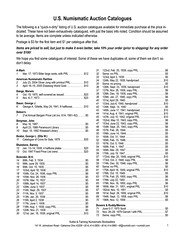 Kolbe & Fanning have issued an online-only listing of U.S. auction catalogues for sale. The list features 568 listings of numismatic sale
catalogues, most of them available for under $10. All are available for immediate purchase at the price indicated. Intended as a “quick-n-dirty”
listing, items have not been exhaustively catalogued, with just the basic info noted. Condition should be assumed to be average. Items are priced to
sell, and customers can take 10% off their order (prior to shipping) for any order over $100. Postage is $3 for the first item and $1 per catalogue
after that.
Kolbe & Fanning have issued an online-only listing of U.S. auction catalogues for sale. The list features 568 listings of numismatic sale
catalogues, most of them available for under $10. All are available for immediate purchase at the price indicated. Intended as a “quick-n-dirty”
listing, items have not been exhaustively catalogued, with just the basic info noted. Condition should be assumed to be average. Items are priced to
sell, and customers can take 10% off their order (prior to shipping) for any order over $100. Postage is $3 for the first item and $1 per catalogue
after that.
The list can be downloaded from the Kolbe & Fanning website at www.numislit.com. We hope you find some catalogues of interest. Some of these we have duplicates of, some of them we don’t: so don’t delay.
THE BOOK BAZARRE
VOLUME DOCUMENTS LOUIS XIV’S ANCIENT COIN COLLECTION
KOLBE & FANNING OFFER A VERY RARE VOLUME DEPICTING LOUIS XIV’S ANCIENT COIN COLLECTION
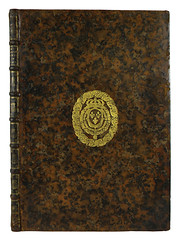 One
of the highlights of Kolbe & Fanning’s upcoming New York Book Auction on January 10 is lot 156, a virtually unknown first issue in book form of
finely executed engravings depicting the Sun King’s collection of ancient coins. The imposing folio volume (measuring 50.5 by 35.5 cm) was created in
1682 and bound for presentation, with the royal arms impressed on both sides in gilt. Issued without text or title, the 41 exceptionally engraved
plates were produced by Simon (some say Giles Jodelet) de La Boissière and generally depict the obverse and reverse of eight ancient Greek or Roman
portrait coins, each within a decorative cartouche incorporating a fleur de lis, all on a finely hatched background.
One
of the highlights of Kolbe & Fanning’s upcoming New York Book Auction on January 10 is lot 156, a virtually unknown first issue in book form of
finely executed engravings depicting the Sun King’s collection of ancient coins. The imposing folio volume (measuring 50.5 by 35.5 cm) was created in
1682 and bound for presentation, with the royal arms impressed on both sides in gilt. Issued without text or title, the 41 exceptionally engraved
plates were produced by Simon (some say Giles Jodelet) de La Boissière and generally depict the obverse and reverse of eight ancient Greek or Roman
portrait coins, each within a decorative cartouche incorporating a fleur de lis, all on a finely hatched background.
Louis XIV (1638–1715) remains one of the most renowned ancient coin collectors of all time. As a boy, Louis was instructed in the art of numismatics by the engraver Jean Varin. In his twenties he was bequeathed the outstanding collection of coins formed by his uncle, Gaston, duc d’Orléans. Louis became a coin collector, an avocation he pursued with great relish for the remainder of his life. His chief purchasing agent was Jean Foy-Vaillant; André Morell served as custodian of the collection. Between 1680 and 1687, Morell studied the royal coin cabinet, intending to publish an inventory; it is likely that this remarkable series of plates were prepared under his supervision.
The plates comprise the third part of the famous Cabinet du roi series (a collection of engravings of treasures from the royal collection known by that name), culminating in an oeuvre of over twenty series of plates depicting various works of art and curiosities, issued over a number of years. Generally, these engravings were issued as individual plates (broadsheets) and the coin engravings were no exception. Few sets of those loose plates appear to have survived. Even more rare are those plates issued in book form.
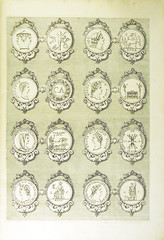
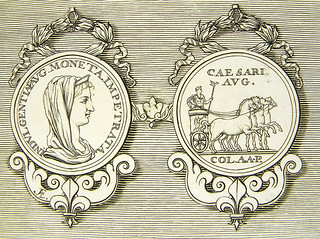
The present volume is a book, rather than a collection of loose plates that have been bound. It was printed on folios (one plate impression on one side, another opposite on the other side), which were then folded in half, gathered, and sewn in signatures. An examination of the chain lines verifies this: in the book version, the chain lines on both plates and blanks are vertical, corresponding to a folded folio sheet, while copies of the individually printed broadsheet plates feature the horizontal chain lines of unfolded sheets.
Only a very small number of sets of the plates were apparently issued. Were it not for a 1704 “second” edition, these plates depicting the ancient coin collection of Louis Quatorze would today be little known. The plates in that later work were entirely re-engraved and, while they largely mirror those of the original edition, they suffer greatly in comparison with the original 1682 engravings, which are far more skillfully executed and esthetically appealing.
The blossoming of numismatics as a science in France coincides with the reign of Louis XIV. In the view of the cataloguers, the special issue of Medaillon du roi offered here may truly be considered one of the glories of French numismatic literature.
Kolbe & Fanning’s public auction will be held on Saturday, January 10, 2015 at the Waldorf-Astoria Hotel in New York City. The sale will be held in conjunction with the New York International Numismatic Convention. Printed catalogues have been mailed to established clients. A PDF of the catalogue has been posted to the Kolbe & Fanning website at www.numislit.com. Prospective bidders may also access the live online catalogue and register to bid through auction.numislit.com. Please contact David Fanning at df@numislit.com for more information.
David F. Fanning, Ph.D.
Kolbe & Fanning Numismatic Booksellers LLC
141 W. Johnstown Rd.
Gahanna, OH 43230
(614) 414-0855
Cell (614) 256-8915
Fax (614) 414-0860
df@numislit.com
www.numislit.com
SKLOW MAIL BID SALE #24 CLOSES FEBRUARY 7, 2015
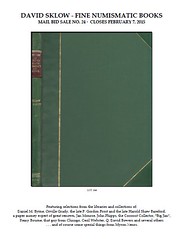 Hello and a Very Happy Holiday Season!
Hello and a Very Happy Holiday Season!
Below are the highlights to MBS # 24 closing February 7, 2015. Catalogs are at the printing company and will be mailed after Christmas. The catalog will post to our web site in just a few days. The sale is very diverse in content, and may very well have something for everyone! There are no changes to our terms of sale.
- The Fabulous Library of Daniel M. Byrne covering Military Awards, Decorations & Medals.
- 1929 ANA Chicago Convention Photograph.
- 1937 ANA Washington, D.C. Convention Photograph.
- Historie Des Romans Depuis Les Temps Les Plus Recules Jusqu'a A L'invasion Des Barbare Vol II-VII, 1880 first edition by Victor Duruy.
- B. Max Mehl's Fiftieth Sale Catalog inscribed to Harold Bareford by Mehl, with Bareford's original bid sheets tipped in.
- Long run of Director of the U.S. Mint Reports.
- Abe Kosoff Memorabilia.
- Long run of Coinage of the Americas Conference Works.
- Limited Edition Numbered 82 of 182, State Copper Coinage 1785-1788, the Taylor Collection Photographic Plates by Bowers and Merena, 1988.
- Long run of hardbound Bowers and Merena Auction Catalogs.
- Eckfeldt and Du Bois, 1851 second edition, New Varieties of Gold and Silver Coins, Counterfeit Coins, and Bullion........
- Heath Counterfeit Detector, pocket edition, 1870, third edition, 11 plates, Newman Type 3-P.
- Heath Counterfeit Detector, 1877, twelfth edition, 10 plates, Newman variety 12-P-3.
- History of the First Mint, 1924 first edition.
- Deluxe edition, Albert A. Grinnell Collection by Barney Bluestone, 1944-1946.
- History of the Currency of the Country and of the Loans of the United States from the Earliest Period to June 30, 1900, second edition by William F. De Knight. RARE.
- Heath Counterfeit Detector, pocket edition [first] 1864, 10 plates, Newman Type 1-P.
- Heath Counterfeit Detector, Banking House edition, 1866 second edition, 12 plates, Newman 2-BH-4.
- Heath Counterfeit Detector, several other examples.
- Lee F. Hewitt's Personal copy of the William P. Donlon Collection, Deluxe Hardbound Numbered edition 1956 by Kosoff.
- Original Mason's Coin & Stamp Collectors' Magazine. Volumes I-III, 1867-1870.
- Deluxe Hardbound Limited Edition The Wayte Raymond Collection Parts I-IV. 1977-1978 by NASC, only 53 were produced.
- Numbered and Stamped MPC Fest XV edition 11 of 40, American Red Cross in World War II Collectors' Guide.
- The Romance And Tragedy of Banking, 1922, by Thomas P. Kane.
- Petersons' Complete Coin Book. 1859. by T.B. Peterson.
- A Run of Commemorative Medal books by Robert R. Heath.
- Original 1878 two volume The Medallic History of the United States of America, by Loubat, J.F.
- A complete set 1935-1976 of The Numismatic Scrapbook, 1935-1946 uniformly bound, 1947-1976 in original wrappers.
- Long run of volumes of the Canadian Antiquarian & Numismatic Journal 1877-1933.
- Canadian Numismatic Association, The CNA Bulletin 1950-1955 complete.
- Canadian Numismatic Association Journal, Volume 1-44, 1956-1999.
- Run of Interesting Notes, by Roger Durand.
- Nice group of Treasure, Sunken Ships, Wrecks and Diving works.
- Several Deluxe Hardbound Catalogs from Heritage.
- Frossard and Hays, 1910 Gilbert/Elder edition on 1794 Cents, w/4 pls.
- Stacks Reed Hawn Sale, 1993, Limited Edition No. 5 of 20.
- Decorations Officielles Francaises, 1956, 72 plates, 1962 supplement tipped in.
- The Interallied Victory Medals of WW I, second edition 1992, by Alexander Laslo.
- Das Ordenbuch Der Gewesenen Osterreichisch - Ungarischen Monarchie, 1918-1919, 26 exquisite elephant folio plates.
- Awards & Decorations of U.S. State Military Forces, 1988, by Gregory Ogletree.
- A Long Run of deluxe Hardbound Sale Catalogs of George Frederick Kolbe 1981-2000.
- ANA - First Strike: The Magazine for Young Numismatists, 1987, Vol. I No. I.
- Myron Xenos's Inventory Copy of Gengerke American Numismatic Auctions, 1990.
- The Growth of Chicago Banks 1816-1938, two volume set, 1938, by F. Cyril James.
- Numerous Special Edition Redbooks by Yeoman/Bressett.
- Run of Leather Bound Redbooks.
- Very nice run of Early volumes of the Numismatist 1894- 1921.
- Numismatic Scrapbook volumes in original paper covers, 1938-1941, 1943, 1944.
- Small offering of 19th Century Auction Catalogs.
- Detroit Coin Club Annual Banquet Booklet, 1939, with a fabulous array of autographs.
- Detroit Coin Club First Life Member Dinner Booklet, 1965, with fabulous autographs.
- Frank J. Katen, 1950 Milford Coin & Stamp Co. Announcement.
- Deluxe Leather Australian History 1901-2001 as seen through banknotes.
- Very Early Newspapers with Numismatic Content.
- And much, much more!
David Sklow-Fine Numismatic Books
P.O. Box 6321
Colorado Springs, CO 80934
PH: 719-302-5686
FAX: 719-302-4933
Email: numismaticbooks@aol.com
Web Site: FineNumismaticBooks.com
THE BOOK BAZARRE
NEW BOOK: THE 1822 GOLD HALF EAGLE

We invite you to order in advance one of the most extraordinary books of our time. Q. Dave Bowers, working with a team of researchers, has used the 1822 half eagle as a focal point to create an absorbing narrative covering much of numismatics of the past century and a half. This has been made possible by the upcoming sale at auction of the D. Brent Pogue Collection specimen of the 1822—the finest of only three known, with the other two being in the National Numismatic Collection in the Smithsonian Institution.
In the past two centuries the 1822 half eagle has been sold at auction only two times: at the H.P. Smith Sale in 1906 and the Louis E. Eliasberg Gold Coin Collection Sale in 1982. Other transactions have been by private treaty, including the highly-acclaimed Dunham coin sold to Charles M. Williams in advance of the auction-to-be.
Generations of numismatists have been born and died without having had the opportunity to acquire an 1822 half eagle. Here is what two prominent dealers have said:
“The King of All Rarities. The 1822 Half Eagle, Probably the Rarest Coin in the World”—B. Max Mehl, 1941.
“The legendary 1822 half eagle is the most famous and most desirable United States gold coin.” —David W. Akers, 1979
The new study contains much information never published in a book before. Although 17,796 half eagles were coined in 1822, why are only three known today? The mystery of the rarity of the coin is revealed.
You will have “you are there” experiences with many famous collectors and dealers. You will “meet” Virgil M. Brand (who formed the greatest private coin collection), Louis E. Eliasberg, the Chapman brothers, Abe Kosoff, the Stack family, B. Max Mehl, and many other personalities, including much information—often surprising—that is not available in any other book. You will go behind the scenes with the National Numismatic Collection, how the Mint Cabinet was formed, and how in 1976 many of the rarities in the Smithsonian were nearly taken away!
We promise you a great “read,” a delightful book that will be among your favorites. Guaranteed!
What You Will Get
The book is heavily illustrated and is deluxe hardbound with gold-foil-imprinted cover, fine endpapers, and printed on high-quality paper stock and
will list for a remarkably low $39.95 plus postage. Normally, a limited edition of a comparable book would be $50 or more.
Special offer: For just $24.95 plus $5 shipping you will be among the first to get a copy, expected to be in your hands in early December. Each copy will include a special autographed bookplate.
Limits: This Pre-Publication Offer is available only until December 31. Limit: 3 copies to any one person. As the edition is limited, all orders are subject to confirmation. Books will be shipped on a first ordered, first sent basis.
Your complete satisfaction is guaranteed. If for any reason you are not 100% delighted, you may return the book within 14 days for a full refund.
Call 866-811-1804 to order today!
To read the complete article, see:
Special
Pre-Publication Offer: The 1822 Gold Half Eagle (www.stacksbowers.com/NewsMedia/Blogs/TabId/780/ArtMID/
2678/ArticleID/64903/Special-Pre-Publication-Offer-The-1822-Gold-Half-Eagle.aspx)
NEW BOOK: OPERATION MIDAS
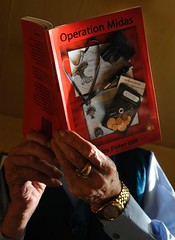 It's the glinting mountain of Fool’s Gold, commissioned by the Fuhrer,
that flooded into war-torn Britain in a bid to break the bank.
It's the glinting mountain of Fool’s Gold, commissioned by the Fuhrer,
that flooded into war-torn Britain in a bid to break the bank.
Fake, high value coins were churned out in their millions, used to melt our stretched economy, pay foreign agents and finance the Nazi war machine abroad.
And one well-known Walsall collector believes the bogus bullion is still out there. Many of the sovereigns stashed away by Midland family’s as an investment may be the residue of the Reich’s counterfeit industry.
For the veteran dealer, who has hidden his identity, fearing the bombshell findings will spark a backlash from fellow dealers, a chance meeting in India began the global hunt for Nazi gold.
There, a German woman with ancestral links to Hitler’s hierarchy, asked the 77-year-old to value a rare James II guinea – a coin worth over £2,500 in good condition. It was a fake: a near perfect fake, but a dud, nonetheless. And its provenance led our man straight to Friedrich Schwend, the Nazi industrialist tasked with destabilising Allied powers through a stream of Mickey Mouse money.
He was the Facist “fence” for near undetectable coins and notes, crafted by master forgers forced to slave round the clock in Blocks 18 and 19 of Sachsenhausen Concentration Camp.
The Black Country coin expert, working with private investigator Peter Gill, has now released a book – “Operation Midas”, the name given to the complex coin con – on his two-year probe into Hitler’s money laundering operation.

But while the fruits of Operation Bernhard were burned long ago, the faux riches spewed out in sadistic sweat shops by Operation Midas remain. And the rogue coins still foil many an expert.
“The James II guinea worn by that woman in an Indian hotel back in 2011 was the best counterfeit coin I’ve seen,” said Max.
“For a gold coin, there are three tests of authenticity. The weight test, which eradicates all but the thickest gold plate. The acid test, where nitric acid burns through anything that isn’t the real McCoy. The scratch test which reveals non-precious metal under the gold.
“Not surprisingly, the latter two tests are seldom used because they deface the coins. Nazi gold, however, passes all three. It’s still out there and dealers know it, many getting round accusations of selling forgeries by slapping an ‘as seen’ notice on gold coins for sale.
“In layman’s terms, that’s a ‘buyer beware’ warning.”
The Fuhrer’s funny money was destined for a global audience – and it was needed: Reichsmarks were only accepted in Nazi occupied territories and Hitler’s spies needed to grease palms abroad.
To read the complete article, see:
Walsall coin collector and private
investigator probe Nazi gold dumped in Britain during World War 2
(www.birminghammail.co.uk/news/midlands-news/walsall-coin-collector-private-investigator-8325636)
BOOK REVIEW: CIVIL WAR SUTLER TOKENS, 2ND EDITION
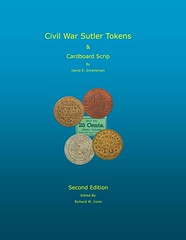 A few days ago, I received a copy of the new book, Civil War Sutler Tokens & Cardboard Scrip, by David Schenkman, edited by Richard Irons.
Being a Sutler token collector for many years, I have been looking forward to an up to date second edition for quite a long time and I was not
disappointed.
A few days ago, I received a copy of the new book, Civil War Sutler Tokens & Cardboard Scrip, by David Schenkman, edited by Richard Irons.
Being a Sutler token collector for many years, I have been looking forward to an up to date second edition for quite a long time and I was not
disappointed.
The first twenty pages gives the reader a precise and clear introduction to the business at hand. Included are a Preface, Introduction, Acknowledgements, followed by a discourse on the Civil War Sutler and his tokens. We have rarities and valuation information, along with a listing of Sutler diesinkers and ending with a cross reference list. A tremendous amount of information is included and we’ve yet to get to the heart of the book.
The catalog section of the book covers 170 pages. A new numbering system is implemented and I feel it is an improvement over the old numbering system as it leaves room for new discoveries. All of the tokens are pictured in color with many (if not most) of the tokens being the finest known. Each token has an approximate valuation in several different grades courtesy of Steve Hayden. Many new discoveries are included since the first edition originally published in 1983.
Finally, the section on cardboard scrip completes the final 40 pages. Wonderful color pictures of these seldom seen pieces abound.
Civil War Sutler tokens, along with cardboard scrip are some of the rarest and infrequently seen items in the exonumia field. This book will get you up to date with these fascinating pieces of Americana. The retail price of $100 is not inexpensive but is well worth it if you have even a small interest in Sutler tokens and cardboard scrip.
To read the earlier E-Sylum article, see:
NEW BOOK: CIVIL WAR SUTLER TOKENS, 2ND EDITION
(www.coinbooks.org/esylum_v17n51a05.html)
BOOK REVIEW: CASH IN YOUR COINS, 2ND EDITION
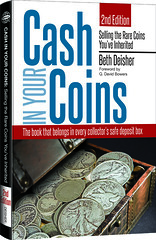 Cash In Your Coins, “Selling the Rare Coins You’ve Inherited,” 2nd Edition, Author Beth Deisher,
Foreword by Q. David Bowers, Whitman Publishing, LLC, Atlanta, GA, 2014, Reviewed by John and Nancy Wilson, NLG
Cash In Your Coins, “Selling the Rare Coins You’ve Inherited,” 2nd Edition, Author Beth Deisher,
Foreword by Q. David Bowers, Whitman Publishing, LLC, Atlanta, GA, 2014, Reviewed by John and Nancy Wilson, NLG
The reference has 292 pages with many color illustrations. A copy of this book should be placed in your safety deposit box, along with your numismatic collection. The Foreword was done by noted numismatist Q. David Bowers. We especially liked this comment from Mr. Bowers, “Beth shines a light on tax-related questions, suggesting paths to follow and with whom you should consult.”
The Preface by the author explains in an easy to read manner why this book is important to, “EVERYONE.” Many fascinating stories will be found in the reference.
Since Beth became Editor of Coin World she is the founding Editor of four other publications. She has testified in Washington at Congressional hearings regarding our coinage. For her 29 years of service in the numismatic hobby she was the recipient of many awards. Besides winning many Numismatic Literary Guild (NLG) awards over the years she received the NLGs highest honor – The Clemy. Ms Deisher received many awards from the American Numismatic Association. 1999 & 2009 Presidents Awards; 1995 - Glenn Smedley Memorial Award; 2004 - Century Club Recipient; 2006 - Burnett Anderson Memorial Award; 2010 – Farran Zerbe Memorial Award and in 2013 she was enshrined in the ANA Hall of Fame.
The Chapters in the book are:
1. Can You Answer This Question? “How much do you want for your coins?” The information will help you find out the answer.
2. Preparing to Look at Your Coins. You will learn the safe methods when handling your collection or accumulation.
3. The Basics of Coin Identification. Everything you need to know will be found here.
4. The Adventure Begins. The chapter will explain how to sort your coins.
5. Identifying U.S. Coins by Design Type. Every design type is explained and illustrated in color.
6. Uncirculated and Proof Sets. The author explains in detail how to distinguish the difference between the two.
7. Identifying U.S. Paper Money by Design Type. Both large and small size currency are covered, including World War ll issued notes, and star and error notes are also covered.
8. If It's Not a U.S. Coin. A simple suggestion by the author asks: 1. Does it bear a date? 2. Does it state a denomination, in words and/or numerals? 3. Does it contain the legends LIBERTY and UNITED STATES OF AMERICA? This will help in identifying medals, tokens and foreign coins or notes.
9. Creating an Inventory. The suggestion here is that if you have a computer use it to catalog your holdings.
10. Determining Value. Coins from poor to uncirculated condition are defines and examples from AG-3 to AU-55 are pictured.
11. Independent Appraisals. Many kinds of appraisals are described and their advantages given.
12. Taxes. The author covers probate, the Federal estate tax, Federal annual gift-tax exclusion, state “death” taxes, estate tax, inheritance tax along with state information on taxes will help you decide how to proceed with your collection.
13. Talking the Talk. A dictionary defines the words that are covered in the hobby.
14. Finding a Buyer. Auction houses including online (with listings), coin dealers & shows, ANA & PNG along with other avenues you can explore are given. Melt and silver values are also explained with a worksheet.
Appendix A. Has graphs and prices for the bullion value of silver coins.
Appendix B. Has graphs and prices for the bullion value of gold coins.
Bibliography. References for the denominations of all coins and others will be found here.
The reference will answer many questions about coins whether you have one or thousands. We highly recommend the reference which is available for $9.95 from the publisher: Whitman Publishing LLC, 3101 Clairmont Rd., Suite G., Atlanta, GA. 30329, Phone Number (800) 546-2995 or www.whitmanbooks.com
To read the earlier E-Sylum articles, see:
NEW BOOK: CASH IN YOUR COINS, 2ND EDITION (www.coinbooks.org/esylum_v17n35a03.html)
BOOK REVIEW: CASH IN YOUR COINS, 2ND EDITION
(www.coinbooks.org/esylum_v17n51a07.html)

NEWMAN NUMISMATIC PORTAL POTENTIAL
Dick Johnson writes:
I read your History of the Coin Library twice since I already had the notice of the Newman Numismatic Portal Project with mention of your name.
I can imagine how thrilled you are to see some of your plans and ideas come to fruition and be associated with the Newman Project. You had mentioned some of these in phone conversations but now I understand the full scope of the project.
Your databank and expertise combined with the Newman resources will provide writers and researchers in the field with a vast resource useful beyond our present comprehension. We look forward to the future with great excitement for what can be produced for advancing the knowledge of numismatics.
The thrill of owning a new specimen can be matched with an ever increasing amount of data about that piece. This will raise collecting numismatic items to a height never achieved before.
We are on the cusp of a new era of numismatics and colleting in a field we all love. Glad to learn your talents will carry this endeavor further.
To read the earlier E-Sylum articles, see:
NEWMAN NUMISMATIC PORTAL LAUNCHES IN 2015 (www.coinbooks.org/esylum_v17n51a08.html)
THE HISTORY OF THE COIN LIBRARY (www.coinbooks.org/esylum_v17n51a09.html)
NOTES FROM E-SYLUM READERS: DECEMBER 21, 2014
Going Beyond Coin, Grade, and Price
Regarding last week's issue, Dave Bowers writes:
It is the collective challenge of all of us to encourage collectors to go beyond the coin, grade, and price and to explore tradition and history. As The E-Sylum demonstrates so well, there is an great universe of interesting items to enhance the desirability and appreciation of coins. Today, as the membership of the Rittenhouse Society reflects, we have more numismatic scholars than ever before.
Sam Abraham of Clifton, Arizona
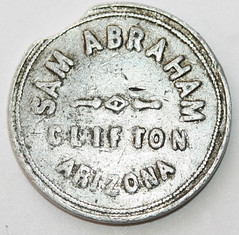
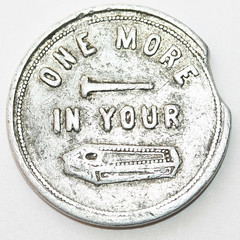
Peter Huntoon writes:
Here is yet one more nail in the coffin with regard to the token featured in the last E-Sylum labeled "one more nail in your coffin." Sam Abraham is listed as president of the First National Bank of Clifton, Arizona, in the annual reports of the Comptroller of the Currency for the years 1918 to 1922. Sam Abraham was the proprietor of the Clifton Hotel. Probably the token is a play on the saloon in the hotel. Talk about something to spike the interest of the most jaded numismatist!
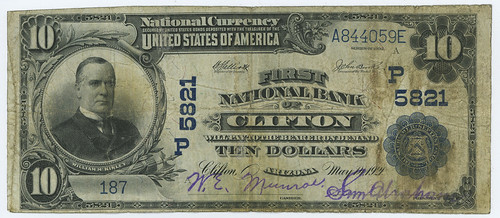
To read the earlier E-Sylum article, see:
WAYNE'S NUMISMATIC DIARY: DECEMBER 14, 2014 : One More Nail in Your Coffin
(www.coinbooks.org/esylum_v17n51a21.html)
MORE ON THE PABLO PICASSO SILVER AND GOLD MEDALS
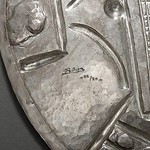 Description: PABLO PICASSO (Malaga 1881 - Mougins 1973)
Description: PABLO PICASSO (Malaga 1881 - Mougins 1973)
FFace on a square, 1957. Silver plate. Edition of 20. 42 cm. Original wood box. Artist's signature and numbered 14/20
That's BIG - just over 16.5 inches.
To read the complete article, see:
Lot 125: PABLO PICASSO (Malaga 1881 - Mougins
1973) (www.invaluable.com/auction-lot/pablo-picasso-malaga-1881-mougins-1973-125-c-f6a1546eed)
To read the complete lot description, see:
PABLO PICASSO
(Malaga 1881 - Mougins 1973) Face on a square, 1957...
(www.51gallery.auction.fr/_fr/lot/pablo-picasso-malaga-1881-mougins-1973-face-on-a-square-1957-7108377#.VJbwhl6Cwg)
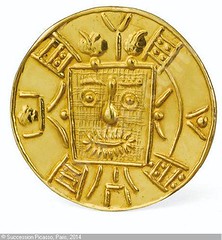 Gold pendant/medal "VISAGE DANS UN CARRÉ" (face in a square), 1973, #19 of 20. In Sotheby's Important Ceramics by Pablo Picasso,
London, Wednesday, May 07, 2014. Lot 320. Estimate 7,000 — 10,000 GBP LOT SOLD. 15,000 GBP (Hammer Price with Buyer's Premium)
Gold pendant/medal "VISAGE DANS UN CARRÉ" (face in a square), 1973, #19 of 20. In Sotheby's Important Ceramics by Pablo Picasso,
London, Wednesday, May 07, 2014. Lot 320. Estimate 7,000 — 10,000 GBP LOT SOLD. 15,000 GBP (Hammer Price with Buyer's Premium)
Gold pendant, 1973, with the stamped signature and numbered 19/20 on the reverse, with the goldsmith's mark 'MH' and the French assay mark for gold, stamped '916' for 22-carat gold and numbered '1435' on the reverse, with the original fitted wooden case incised 'Pablo Picasso' diameter: 51mm 2in
To read the earlier E-Sylum article, see:
SOME RECENT AUCTION ITEMS: INDIAN PEACE AND PICASSO MEDALS
(www.coinbooks.org/esylum_v17n51a13.html)
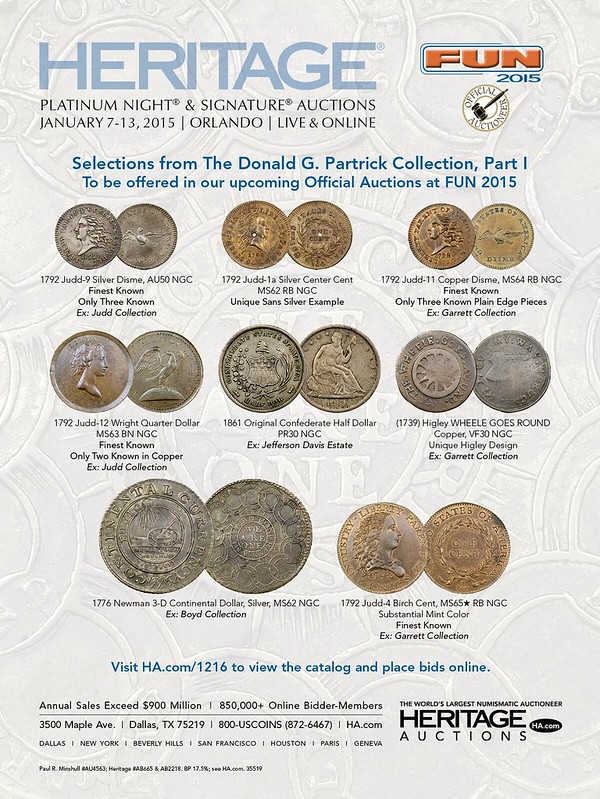
BEN FRANKLIN'S NATURE PRINTING BLOCKS DISCOVERED
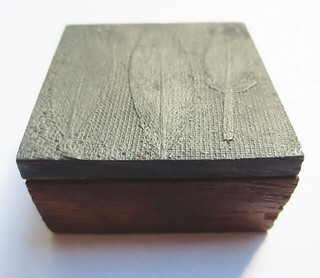 Three extremely rare 18th-century type-metal blocks on deposit with the Library Company of Philadelphia
have been identified as the instruments used to print colonial currency in Delaware and beyond. Furthermore, the blocks were the output of Benjamin
Franklin's printing office and represent a technological innovation—perhaps Franklin's only real invention of a technical advance in
printing—only now fully understood for the first time.
Three extremely rare 18th-century type-metal blocks on deposit with the Library Company of Philadelphia
have been identified as the instruments used to print colonial currency in Delaware and beyond. Furthermore, the blocks were the output of Benjamin
Franklin's printing office and represent a technological innovation—perhaps Franklin's only real invention of a technical advance in
printing—only now fully understood for the first time.
Among the most intriguing of all early American graphics are the delicate images of leaves used as a counterfeit deterrent on paper money printed by Franklin and his successors from 1737 to 1785. Experts believed they were made by pressing a leaf into plaster and making a mold of the impression that could then be used to cast printing blocks from type metal. This was guesswork, however, as the process was highly secret, and none of the blocks was known to have survived—until now. It is very rare to find examples of early American metal type, as it was normally melted down when it wore out. Type-metal blocks used to print pictures and ornaments are even rarer.
 The Delaware Country Institute of Science (DCIS) in Media, PA, recently found what appeared
to be one of the leaf blocks used to print currency in their collection, along with two metal ornament blocks and some pieces of paper money. They
showed them to Jessica Linker, a current Library Company fellow, who suggested that the blocks be shown to Library Company Librarian James Green, the
nation's foremost expert on Benjamin Franklin's job-printing work.
The Delaware Country Institute of Science (DCIS) in Media, PA, recently found what appeared
to be one of the leaf blocks used to print currency in their collection, along with two metal ornament blocks and some pieces of paper money. They
showed them to Jessica Linker, a current Library Company fellow, who suggested that the blocks be shown to Library Company Librarian James Green, the
nation's foremost expert on Benjamin Franklin's job-printing work.
Using some very high resolution digital photography, and matching the blocks to currency in the collections of Winterthur and the American Antiquarian Society, as well as that from DCIS, Linker and Green determined that all the blocks were—in fact—cast, making possible some of their more intricate devices, such as variable surface height so that some low-relief areas print as gray—rather than the firm black of the higher relief elements and the white of recessed areas—and cross-hatching scored into the lead after casting.
All these variously complicated techniques were meant to further deter counterfeiters, on the assumption that printers trained in the normal way would not have known how to replicate them. They were effective precisely because they were made in unconventional ways. Given the date of currency printed with the leaf block, issued by the province of Delaware in 1760, this particular block was almost certainly cast not by Franklin but by his successor David Hall. Nonetheless, these blocks may be the earliest surviving pieces of type metal cast from molds made in America.
The Delaware County Institute of Science has graciously agreed to place these materials on long-term deposit at the Library Company, and we anticipate that more investigation will yield more discoveries.
Eric Newman writes:
"Very interesting. I'll have to study it further to see how it dovetails with my previous writing on the subject of Franklin's development of nature printing."
For more on Delaware 1760 currency, see:
Delaware Currency May 31, 1760
(www.coins.nd.edu/ColCurrency/CurrencyText/DE-05-31-60.html)
To read the complete article, see:
Benjamin Franklin Printing Blocks
Identified (www.finebooksmagazine.com/press/2014/12/-benjamin-franklin-printing-blocks-identified.phtml)
NEW YORK TIMES ON FRANKLIN'S NATURE PRINTING
Benjamin Franklin’s Philadelphia printing shop made plaster molds from pressed sage leaves to create metal stamps for marking foliage patterns on Colonial currency. The distinctive contours of leaf spines, stems and veins were meant to thwart counterfeiters, and Franklin’s workers managed to keep the casting technique a secret that has puzzled modern scholars, too.
James N. Green, the librarian at the Library Company of Philadelphia (founded by Franklin in 1731), had wondered for the last two decades if any of Franklin’s actual metal leaf-printing blocks for the bills survived. He had concluded that if one of these castings ever did emerge, it would be “a really sensational discovery,” he said in an interview last month.
Such a discovery has been made in a vault at the Delaware County Institute of Science in Media, Pa. Jessica Linker, a historian who is studying early female botanists, recognized the sage leaf patterns on one of Franklin’s metal blocks when the institute staff opened the box it was stored in. The block is now on loan to the Library Company, which is planning to exhibit it with related printing equipment and currency. Its three parallel sage leaves match images on Franklin’s 1760s shilling notes for Delaware’s government; the bills bear the slogan “To Counterfeit is DEATH.”
Hardly any early American metal printing blocks survive; most were melted down into raw material for new type. Fragments dating to the 1600s have been excavated at Harvard Yard, and early-19th-century metal letters surfaced at the construction site for the Museum of the American Revolution in Philadelphia.
Colonial shillings on paper, however, are relatively common. They bring a few hundred dollars each at auction, as do antique counterfeits.
Artifacts from America’s centuries of battles against currency forgers have become popular museum displays as well. Mark Tomasko, a collector and historian who has collaborated with institutions including the Museum of American Finance and the American Numismatic Society on related shows, said that fake bank notes and the tools used to create and detect them were “a constant interest.”
He has sought out material related to the American inventor Jacob Perkins; in the 1790s, Perkins developed steel plates for printing currency that were considered nearly impossible to fake. Perkins’s engraving plant has been restored in Newburyport, Mass., and the Historical Society of Old Newbury is developing exhibitions there that are scheduled to open in 2016.
To read the complete article, see:
How Franklin Thwarted Counterfeiters
(www.nytimes.com/2014/12/12/arts/design/how-franklin-thwarted-counterfeiters-.html)
BALLOONING NUMISMATISTS
Joel Orosz submitted this short piece based on some preliminary research into the topic, involving American numismatists Ebenezer Locke Mason and J.N.T. Levick. Thanks! Who can help? Are there other numismatists who should be on this list? Any other references to numismatists in balloons? -Editor
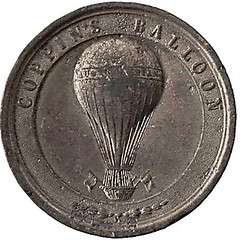 According to F. Stansbury Haydon's Military Ballooning During the Civil War, originally
published in 1941 by the Johns Hopkins University Press, Ebenezer Locke Mason joined Col.. Thaddeus Sobieski Constantine Lowe, the Chief Aeronaut of
the Army of the Potomac' Balloon Corps (Lowe's second middle name is often incorrectly given as "Coulincourt"), and Mason served
under Lowe during the Peninsular Campaign of 1862. Mason was one of only 9 trained aeronauts to serve under Lowe (p. 267), and he ably assisted Lowe
on some occasions (p. 370).
According to F. Stansbury Haydon's Military Ballooning During the Civil War, originally
published in 1941 by the Johns Hopkins University Press, Ebenezer Locke Mason joined Col.. Thaddeus Sobieski Constantine Lowe, the Chief Aeronaut of
the Army of the Potomac' Balloon Corps (Lowe's second middle name is often incorrectly given as "Coulincourt"), and Mason served
under Lowe during the Peninsular Campaign of 1862. Mason was one of only 9 trained aeronauts to serve under Lowe (p. 267), and he ably assisted Lowe
on some occasions (p. 370).
Mason was given the courtesy title of captain, (p. 270), but was paid infrequently, and finally, in the midst of the Peninsular Campaign, Mason and another aeronaut refused to serve further until their salaries, long overdue, were paid. For this insubordination, Lowe cashiered both of them, and Mason's career with the Army of the Potomac came to an abrupt end.
Years later, as Dave Bowers can attest, Mason wrote in one of his house organs about encountering, by chance, during the Peninsular Campaign, his prewar numismatic buddy, Joseph Napoleon Tricot Levick, who was then also a captain in the Army of the Potomac. Mason's story is charming to read. Levick, however, does not seem to have been part Lowe's Balloon Corps; he apparently served elsewhere in the Army of the Potomac.
Some years after that an anonymous writer in The American Stamp Mercury and Numismatist (possibly the Boston numismatist Charles Chaplin), wrote a savage review of Mason's numismatic work in which he called Mason, probably with a wink to his ballooning past, as "one of those high-pressure kind of human gas-bags."
THE BOOK BAZARRE
ARCHAEOLOGISTS FIND GREEK COIN AT ANCIENT FARMHOUSE SITE
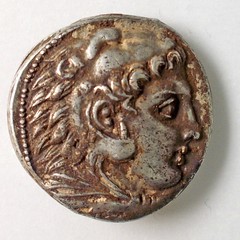
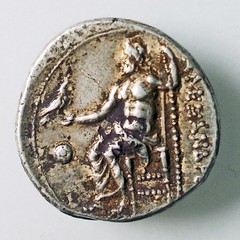
A large farmhouse - dating back some 2,800 years - has been discovered in central Israel, the Israel Antiquities Authority announced Monday. The structure, located in Rosh Ha'ayin, apparently dates back to the period of the Assyrian conquest in the 8th century B.C.E.
It's early days to say exactly who lived in the huge house, which had 23 rooms. It can be said that the house had been in use for roughly 600 years, from the Iron Age II through to the Hellenistic empire. But a farmhouse of the time would have been more like a settlement than some Big House on the Prarie, possibly housing a farming clan, according to the archaeologists.
The farmhouse was occupied by farmers for some 600 years, based on ceramics and other indications, from the time of the Assyrian conquest through the Persian period in the 6th century B.C.E., and into the Hellenistic period, which began with the conquest of the region (and Persia) by Alexander the Great.
One of the most exciting finds on the floor of one of the rooms – which being from about 325 B.C.E. also helped to date the site, says Shadman – was a rare silver Greek coin, bearing the military leader’s name – ?????N????, around the image of the god Zeus. The flip side of the coin shows Heracles.
Ultimately, the farmhouse with the abandoned coin on its floor had stood empty for centuries on end – but at least it stood. With the Ottoman conquest of the region came an appetite for lime and, to use the stone, they destroyed the building, says Shadman. Yet what does remain is in an excellent state of preservation, says the Israel Antiquities Authority, which – together with the Construction Ministry – has decided to conserve the site as is, for visitors
To read the complete article, see:
2,800-year old farm house uncovered in Rosh Ha'Ayin
(www.haaretz.com/archaeology/.premium-1.631879)
SUNRISE COLLECTION: THE NUMISMATIC ART OF PERSIA
CNG’s Triton XVIII Sale Features Selections from the Sunrise Collection – The Numismatic Art of Persia
Classical Numismatic Group of Lancaster, Pennsylvania and London, England is proud to present Triton XVIII, a Public, Internet, and Mail Bid Sale to be held in conjunction with the 43rd Annual New York International Numismatic Convention (NYINC) on January 6-7, 2015. The NYINC is held at the Waldorf-Astoria Hotel, located at 301 Park Avenue, New York, NY 10022, between 49th and 50th Streets.
One of the featured collections highlighted in Triton XVIII is the Sunrise Collection. In 2011, Classical Numismatic Group published The Numismatic Art of Persia: The Sunrise Collection. Part I: Ancient – 650 BC to AD 650. The Sunrise Collection of the coinages of ancient Persia represents one of the finest private collections of this coinage ever compiled, covering all of the numismatically active cultures along the great Silk Road from Asia Minor to China and India.
While the core of the collection comprises large sections of Parthian, Persis, and Sasanian coinage, it also included selections from the Achaemenids and the Hellenistic empires of Alexander the Great and Seleukos Nikator, whose issues were the first ever struck in Persia, as well as the smaller kingdoms of Charakene and Elymais.
The collection also has modest, yet impressive, groups of coins from those cultures that existed on the periphery of Persia–the Kushan Empire, the Indo-Parthians, the Indo-Skythians, Khwarazmia, and the Iranian Huns. All of these cultures were influenced by, and, in turn, influenced, the indigenous Persian groups that were respectively contemporary with them. While coins of most of these series are readily available, the collective quality and rarity represented by the Sunrise Collection are unprecedented, save for those collections in the greatest public museums. For nearly a half-century, the collector focused on acquiring exceptional specimens for this collection, and his skill in choosing the pieces is self-evident.
CNG is honored to offer in Triton XVIII the first portion of this impressive collection, comprising the Achaemenid, Macedonian, Seleukid, Baktrian, and Kushan sections of the book.
A few of the individual highlights from the Sunrise Collection featured in Triton XVIII are:
Lot 16–Ionian AR Tetradrachm Depicting a Possible Relief Map on the Reverse

IONIA, Achaemenid Period. Uncertain satrap. Circa 350-333 BC. AR Tetradrachm (22mm, 14.94 g). Persian king, wearing kidaris and kandys, in kneeling-running stance right, holding spear in right hand, bow in left / Incuse rectangle, containing pattern possibly depicting relief map of the hinterland of Ephesos. Johnston, Earliest 12 = BMC Ionia p. 324, 3 (same obv. die); Meadows, Administration 328 var. (legend on obv.); Mildenberg, Münzwesen, Group 6.2; Traité II 77–8 (Memnon of Rhodes); Jameson 1787; Pozzi 3138; Sunrise 70 (this coin). EF, toned, light cleaning marks on obverse. Estimated at $20,000
From the Sunrise Collection. Ex Gorny & Mosch 125 (13 October 2003), lot 260.
Johnston has interpreted this remarkable reverse design as a relief map of the hinterland of Ephesos, which would make it the earliest Greek map and first physical relief map known. On the right (north) are the mountains Tmolos and Messogis between the river valleys of the Caÿster and Maeander, to the left of which are three mountain ridges (Madranbaba Dagi, Karincali Dagi, and Akaba Tepesi). Johnston follows Six in suggesting that the coins were probably struck under the Persian general Memnon at Ephesos, circa 336-334 BC, in order to pay his army after he had captured the city, but before his defeat by Alexander at the Battle of Granicus in 334. However, Johnston’s theory has been the subject of some doubt, most recently by Leo Mildenberg.
Lot 24–A Rare Kroisos Gold Stater, Heavy Series
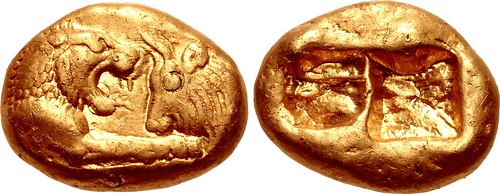
KINGS of LYDIA. Kroisos. Circa 564/53-550/39 BC. AV Stater (17mm, 10.73 g). Heavy series. Sardes mint. Confronted foreparts of lion and bull / Two incuse squares. Berk 2; Traité I 396; Sunrise 5 (this coin). EF for issue, underlying luster, scattered light marks. Rare. Estimated at $30,000
From the Sunrise Collection. Ex Goldberg 60 (12 October 2009), lot 2323.
Lot 88–A Silver Stater from Tarsos depicting Artaxerxes III as Pharaoh?
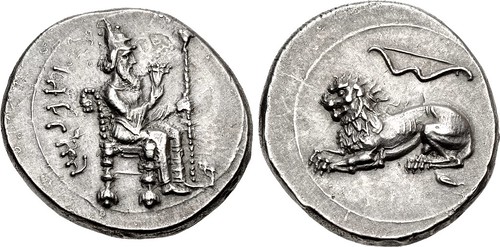
CILICIA, Tarsos. Mazaios. Satrap of Cilicia, 361/0-334 BC. AR Stater (24mm, 10.76 g, 3h). Crowned figure of Artaxerxes III in the guise of Baaltars seated right on throne with back terminating in swan’s head, holding lotus flower in right hand, lotus-tipped scepter in left; B’LTRZ (in retrograde Aramaic) to left, M (in Aramaic) to lower right / Lion recumbent left; bow above. Casabonne Series 6; SNG France 422 (Myriandros); SNG Levante Supp. 26 var. (legend not retrograde; Myriandros); Jameson 1621; Sunrise –. Near EF, lightly toned, a little die wear. Very rare, and the first specimen at auction since NFA XXV in 1990. Estimated at $50,000
From the Sunrise Collection. Ex Prospero Collection (New York Sale XXVII, 4 January 2012), lot 587.
The attribution of the walking-lion series of Mazaios had originally been given to the mint of Tarsos, but Newell argued that they more likely were struck at Myriandros in his study of that mint in AJN 53 (1919). Later, J.D. Bing, in AJN 1 (1989), argued for an alternative attribution of the Myriandros coinage to the mint of Issos. While most numismatic works continue to follow Newell, Casabonne’s significant study of Cilicia during the Persian period convincingly returns these coins of Mazaios to the mint of Tarsos (cf. Casabonne, pp. 215–7).
The appearance of Baaltars on this issue is significantly different from the relatively standard depiction of the deity on other coins of Tarsos. While the deity is typically shown nude to his waist, here the figure is fully clothed with attire that closely resembles that on the figure that appears on the royal Persian coinage struck at Sardes. More importantly, though, is the headdress on the figure. Baaltars typically wears a laurel wreath or no headdress, while this portrait shows the figure wearing an elaborate headdress. In a recent article, Frank Kovacs analyzed the type, and argues that this figure is actually the Great King Artaxerxes III Ochos, in the guise of Baaltars, and the headdress is the combined crown of Upper and Lower Egypt, thus his appearance here is as pharaoh of Egypt (cf. F. Kovacs, "Two Persian Pharaonic Portraits" in JNG L [2000]; see also M. Thompson, in MN XII [1968], pp. 11–2, who notes the figure wearing a "high crown of Egyptian type"). This is plausible, as Artaxerxes was the first pharaoh of the Thirty-First Dynasty of Egypt, and the date of his rule there, 343-338 BC, comports well with this issue under Mazaios.
O. Casabonne, while acknowledging that the figure here may represent a synthesis of Baaltars and the Great King, disagrees with the identification of the headdress as the Egyptian crown. Instead, he views the headdress as being a Phrygian style cap that is often depicted in contemporary art as being worn by warriors (cf. Casabonne, p. 121, fig. 8), but is here shown with the cheek guards in a raised position.
Nonetheless, it is doubtless that the figure here is a synthesized portrait of Baaltars and the Persian Great King. The fractional silver of this issue, interestingly, may be most instructive, as the headdress on the figure is shown wearing a crown that is identical to that on the figure of the royal Achaemenid coinage and his robes have interlocking circles reminiscent of the darics of Carradice Type IV Late (cf. M. Thompson, op. cit., p. 12).
Lot 129–A Hellenistic Masterpiece

SELEUKID KINGS of SYRIA. Seleukos I Nikator. 312-281 BC. AR Tetradrachm (26mm, 17.07 g, 2h). Susa mint. Struck circa 305/4-295 BC. Head of hero (Alexander or Seleukos?) right, wearing helmet covered with panther skin and adorned with the ear and horns of a bull / BASI?EOS SE?EYKOY, Nike standing right, holding in both hands a wreath that she places on trophy to right; EP monogram to lower left, ?I in lower middle field. SC 173.11; ESMS Tr.54 (A40/P6); ESM 413; HGC 9, 20; Sunrise 174 corr. (monogram; this coin). EF, toned, great metal. Among the finest. Estimated at $75,000
Lot 219–An Exceptional Persian Silver Siglos
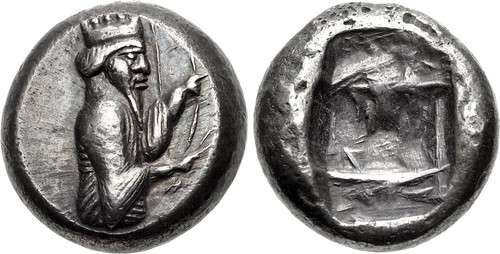
PERSIA, Achaemenid Empire. temp. Darios I. Circa 520-505 BC. AR Siglos (14mm, 5.40 g). Half-length bust of Persian king or hero right, wearing kidaris and kandys, holding bow in left hand, arrows in right / Incuse punch. Carradice Type I (pl. XI, 10); Meadows, Administration 318; BMC Arabia pl. XXVII, 25; Sunrise 18 (this coin). EF, attractively toned. Excellent metal and exceptional in this condition. Very rare. Estimated at $10,000
Lot viewing for Triton XVIII will begin on Sunday, January 4th, from 1PM until 7PM in the Carnegie Suite, located on the 18th floor of The Waldorf-Astoria Hotel. The complete lot-viewing schedule for Triton XVIII is:
Sunday, January 4, 2015 – 1PM until 7PM;
Monday, January 5, 2015 – 9AM until 7PM;
Tuesday, January 6, 2015 – 8AM until 6PM; and
Wednesday, January 7, 2015 – 8AM until Noon.
Auction lots will also be available for viewing at the Pennsylvania offices of CNG from Monday, December 1st, 2014 until Wednesday, December 31st, 2014 by appointment only, with the exception of Friday and Saturday, December 12-13, 2014, when the lots will be on exhibit at the San Francisco Historical Bourse (SFHB). The SFHB is held at the Holiday Inn Golden Gateway, Van Ness and California Streets, San Francisco, CA from 10AM until 6PM each day. Please note that CNG’s office hours will be limited during the holiday season.
The auction sessions for Triton XVIII will be held in the Norse Suite, also located on the 18th floor of The Waldorf-Astoria Hotel. Triton XVIII will be conducted over four sessions with the morning sessions beginning promptly at 9:00 AM on Tuesday, January 6th, and Wednesday, January 7th, 2015, and the afternoon sessions will start at 2 PM on the same days.
In addition, there will be an online, Internet-only, Session 5 for Triton XVIII, which CNG will be conducting as our Electronic Auction 342, and will run online concurrently. E-Sale 342 will feature over 1,000 lots, including further selections from the Sunflower Foundation/MoneyMuseum Collection, and will close on Wednesday, January 14, 2015.
Printed catalogs for Triton XVIII will be available after December 1, 2014. To order a catalog, please visit www.cngcoins.com. Catalogs are $75 to North American addresses, and $100 to the rest of the world. Payment may be made by U.S. $ check or Visa/MasterCard. Catalogues will be mailed to customers on CNG’s active mailing list.
CNG is currently accepting consignments for its next mail bid auction, CNG 99, scheduled for May 13, 2015. The consignment deadline is Friday, January 16, 2015. For further details and any additional information, please contact CNG, Inc. at:
Classical Numismatic Group, Inc.
P.O. Box 479
Lancaster, PA 17608-0479
Telephone: (717) 390-9194
Fax: (717) 390-9978
Email: cng@cngcoins.com
KÜNKER BERLIN AUCTION JANUARY 2015
January 29, 2015 Fritz Rudolf Künker, Osnabrück Berlin Auction 2015
The Künker Berlin Sale: One Highlight after the Next
1,078 lots with a total estimate of 6.5 million, these plain numbers catch best the amazement one is smitten with when flipping through the latest catalog of Fritz Rudolf Künker.
Within the upcoming Berlin sale, to be hold on January 29, 2015, one highlight comes after the next. It starts with 258 spectacular showpieces from the Horn Collection, including a large series of Saxon rarities. Next in line are 238 lots of German coins from different possessions, every item of which is something special, too. The 76 world coins and medals come partly from the Horn Collection featuring a collection of Poland, a series of English guineas and a collection of early American gold dollars. The auction sale ends with 258 Russian coins, the crème de la crème, rarest of the rare. Thus, there is every chance that one or two record prices will be obtained.
It is rather difficult to single out individual pieces from this remarkable material, with so many items pushing themselves to the fore. To start with the Horn Collection, the combination of great rarity and magnificent grade has to be emphasized, being the characteristic feature of most items here. Take a case in point, the extremely rare speciesthaler from 1755, which Frederick II, the Great, had minted for trading purposes. Just 16 examples have survived. The one offered for sale is a splendid specimen, a first strike with tiny adjustment marks in about brilliant uncirculated (34, estimate: 40,000 euros). The gorgeous löser of 9 reichsthaler of Julius of Brunswick-Wolfenbüttel from 1574 not only is of utmost rarity but is likewise an extraordinarily attractive item due to its beautiful patina and the grade, very fine to extremely fine (41, estimate: 50,000 euros), just like the reichsthaler of Anna Salome of Salm-Reifferscheid, who had as Abbess of Essen this wonderful coin made in 1680. The extremely rare coin comes in about extremely fine and is unusually attractive with its marvelous patina (68, estimate: 20,000 euros).
And we have not even reached Saxony, the main collection field of Otto Horn who was living in the city of Meißen. All the “splendid specimens” and “showpieces” included here would make a collection of their own. Just look at the rare double thaler of Frederick August II on the death of his father August the Strong in 1733 with its superb patina and its perfect state of preservation (175, estimate: 10,000 euros) or the double konventionsthaler from 1780 of Frederick August III with a mintage of only 20 specimens, a first strike made with polished dies, that virtually anticipates what modern mints refer to as Proof (183, estimate: 20,000 euros). But there are also fantastic coins with a three-digit estimate. A simple vereinsthaler of John, King of Saxony 1854-1873, a first strike from 1861 with a marvelous patina in brilliant uncirculated is estimated at 500 euros only (192).
We are leaving the Horn Collection, but we are still in Germany and again we are spoilt for choice. There is the Bavarian 8 ducat piece from 1598 on the homage to Maximilian I (266, EF, estimate: 50,000 euros), the pattern of the Bremen 5 mark piece 1904 without border of dots on the side of the coat of arms (331, ab. BU from Proof, estimate: 30,000 euros), the unique philippsgoldgulden of John II, Duke of Cleves, minted in Wesel in 1502 (381, VF, estimate: 30,000 euros), the Passau 6 ducat piece of Joseph Dominicus of Lamberg on his jubilee 50 years ordination of priest (405, EF, estimate: 50,000 euros), not to forget the triple ducat of August the Strong of Saxony from 1696 (441, EF-BU, estimate: 35,000 euros), and the probably most beautiful specimen of the Trier konventionsthaler from 1773 (485, BU, estimate: 25,000 euros). And there is much more to come!
Now, we are going abroad, first to the foreign countries in Europe, and then overseas. There, remarkable items can be discovered, too, like a Danish double ducat of Christian V from 1691 (554, EF-BU, estimate: 17,500 euros), the two types of the 100 perpera from Montenegro, struck in 1910 (637 and 638, both EF from Proof, estimate: 20,000 euros each) or a 8 escudos from Guatemala from 1824 in the name of the Federal Republic of Central America (779, EF-BU, estimate: 60,000 euros).
This takes us to series and collections worth mentioning. At present, Great Britain is a highly popular collection area, with mainly the heavy gold coins obtaining spiraling prices. This is why things will become exciting with the lots following #577, for there are not only one or two 5 guinea pieces hidden in the material from Great Britain but a considerable number. It all starts with Charles II 1668; next are James II 1688, William III and Mary 1692, William III sole 1701, George I 1726, as well as George II 1729 and 1746. What about the prices? Well, the cheapest piece is being estimated at 5,000 euros. Which is the most expensive one? We have not even mentioned it yet: the extremely rare pattern of a 5 guineas piece 1773 for George III, which was never released, offered in this auction for 100,000 euros.
Likewise pieces of greatest rarity are available from the Kingdom of Poland, like a half portugalöser of 5 ducats from 1622 (665, EF, estimate: 80,000 euros). Equally as rare, at least, is a double ducat of John Casimir, minted in Fraustadt in 1650 (670, EF, estimate: 60,000 euros). And these were just two items from the vast number of rarities on offer: 23 out of 49 pieces have an estimate in the five-digit region!
Compared to that, a small series of early gold coins from the United States of America is rather inexpensive, even though it is hard to think of coins that evoke more dreams than these.
You see, the gold 1, 5, 10 and 20 dollar pieces are testimonies to the different kinds of gold rushes: first, the gold rush of North Carolina in 1799 during which the gold was yielded that was used for producing gold dollars only since 1831, second, the gold rush of Georgia in 1828. The most famous ones of course are the coins from California.
200 euros are enough to enter the bidding although the top items, a 10 dollar from 1849, issued by the Miners Bank in San Francisco (803, EF, estimate: 20,000 euros) and a 5 dollar of the Mormons from Salt Lake City from 1860 (815, VF-EF, estimate: 35,000 euros) will certainly obtain completely different prices.
If that weren’t enough, the Russian section begins with a whole series of rarities, too. Capitulating considering the sheer mass of big hits, we restrict ourselves merely to the pieces with a pre-sale estimate of 50,000 euros plus, which still are six lots: 100,000 euros is the estimate of a platinum 6 roubel piece made, of which only 11 pieces had been made in St. Petersburg in 1834 (931) while a 37 ½ roubel piece, equivalent of 100 francs, from 1902 is estimated at 75,000 euros (1055). The mintage of the latter was 225 examples. 60,000 euros are expected for a 10 roubel piece of Peter III from 1762 (873). Three lots are estimated at 50,000 euros: a 50 zlotych 1823 for Poland of which only 181 specimens were minted (917), the same denomination from 1827, with a mintage of 299 specimens (967) and a gold prize medal of the Tsar Nicholas Lyceum in Moscow that was awarded to graduates of the secondary classes at the beginning of the 19th century (1065).
1,078 lots with a total estimate adding up to 6.5 million – these numbers really outline the auction sale. But only a careful examination of the catalog reveals the numerous interesting stories these coins and medals are telling. At the end of the day, a coin dealer does not just sell a piece of metal but the story it is linked to.
The catalogs may be ordered at Künker, Nobbenburgerstr. 4a, D-49 076 Osnabrück; phone +49 (0)541 / 96 20 20; telefax: +49 (0)541 / 96 20 222; or by writing an email: service@kuenker.de. All coins can be viewed online four weeks prior to the auction sale at https://www.kuenker.de/Unsere_Auktionen.Kuenker
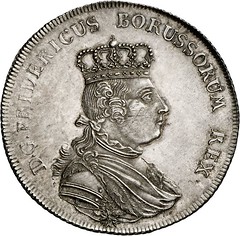
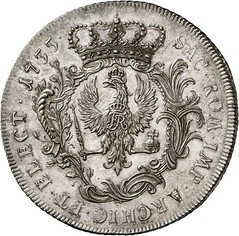
Lot 34: HORN COLLECTION - PRUSSIA. Frederick II, 1740-1786. Speciesthaler 1755, without mintmark, Berlin. Kluge 318. Old. 369. Extremely rare. First strike, about brilliant uncirculated. Estimate: 40,000,- euros
Lot 41: HORN COLLECTION - BRUNSWICK-WOLFENBÜTTEL. Julius II, 1568-1589. Löser of 9 reichsthaler 1574, Heinrichstadt (Wolfenbüttel). Welter 548. Extremely rare. Very fine to extremely fine. Estimate: 50,000,- euros
Lot 183: COLLECTION HORN - SAXONY. Frederick August III (I), 1763-1806-1827. Double konventionsthaler 1780, Dresden, reward of diligence. Dav. 2694. Schnee 1084. Only 20 specimens struck. First strike, brilliant uncirculated. Estimate: 20,000,- euros
Lot 266: GERMANY - BAVARIA. Maximilian I, 1598-1651. 8 ducats 1598, Munich, on his homage. Witt. 775 note. Very rare. Extremely fine. Estimate: 50,000,- euros
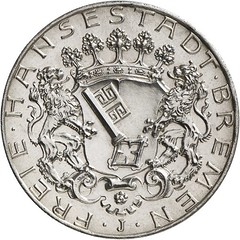
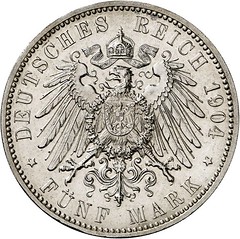
Lot 331: GERMANY - BREMEN. 5 mark 1904. J. 59 note. Very rare. About brilliant uncirculated from proof. Estimate: 30,000,- euros
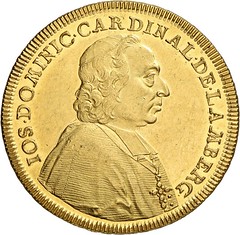
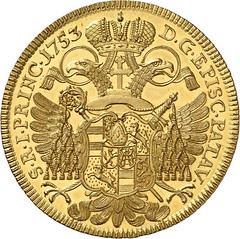
Lot 405: GERMANY - PASSAU. Joseph Dominicus of Lamberg, 1723-1761. 6 ducats 1753, Vienna, on his jubilee 50 years ordination of priest. Fb. 2073. Kellner 163. Very rare. Extremely fine. Estimate: 50,000,- euros
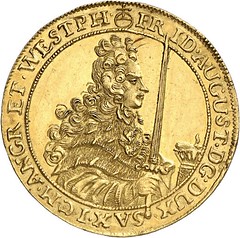
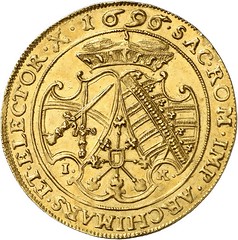
Lot 441: GERMANY - SAXONY. Frederick August I, 1694-1733 (August the Strong). 3 ducats 1696, Dresden, struck with the dies of the 1/4 reichsthaler. Kahnt 26. Very rare. Extremely fine to brilliant uncirculated. Estimate: 35,000,- euros
Lot 485: GERMANY - TRIER. Clemens Wenceslaus of Saxony, 1768-1794. Konventionsthaler 1773, Koblenz. Dav. 2836. The most beautiful specimen of this rare emission in existance. Brilliant uncirculated. Estimate: 25,000,- euros
Lot 512: HRE / Archduke Leopold V, 1619-1632. Triple reichsthalerklippe n. d. (posthumous coinage from 1635), Hall, on his wedding with Claudia of Medici in 1626. Dav. A 3331. Very rare. Extremely fine. Estimate: 35,000,- euros
Lot 600: GREAT BRITAIN. George III, 1760-1820. 5 guineas 1773, London. Pattern with plain edge. Extremely rare. Extremely fine. Estimate: 100,000,- euros
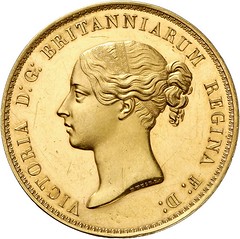
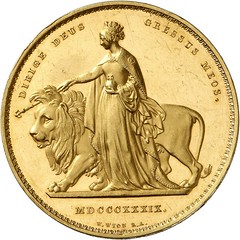
Lot 605: GREAT BRITAIN. Victoria, 1837-1901. 5 pounds 1839, London “Una and the Lion”. Fb. 386. Seaby 3851. Very rare. Tiny traces of working, fine scratches, Proof. Estimate: 40,000,- euros
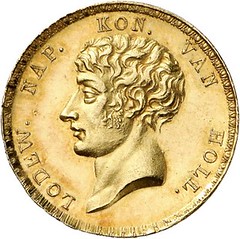
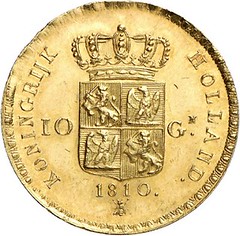
Lot 642: NETHERLANDS - KINGDOM OF HOLLAND. Louis Napoleon, 1806-1810. 10 gulden 1810, Utrecht. Fb. 321. Schulman 127a. Very rare. About brilliant uncirculated. Estimate: 30,000,- euros
Lot 665: POLAND - KINGDOM. Sigismund III, 1587-1632. 1/2 portugalöser of 5 ducats 1622, Vilnius for Lithuania. Kopicki 3562 (R7). Extremely rare. Extremely fine. Estimate: 80,000,- euros
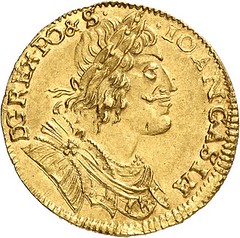
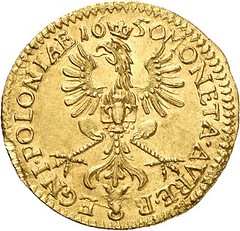
Lot 670: POLAND - KINGDOM. John Casimir, 1649-1668. 2 ducats 1650, Fraustadt. Kopicki 1881 (R8). Extremely rare. Extremely fine. Estimate: 60,000,- euros
Lot 703: POLAND - DANZIG. Gold pattern of 5 ducats from the dies of the 30 groschen piece 1762, with title of August III. Kopicki 7779 (R8). From auction sale Künker 181 (2011), lot 1077. Extremely rare. Extremely fine. Estimate: 75,000,- euros
Lot 779: GUATEMALA. Federal Republic of Central America, 1823-1839. 8 escudos 1824 NG-M, Guatemala. Fb. 62. Graded MS 62 by NGC. Extremely rare. Extremely fine to brilliant uncirculated. Estimate: 60,000,- euros
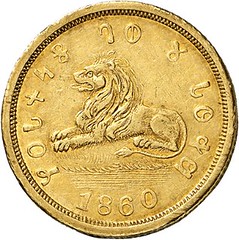
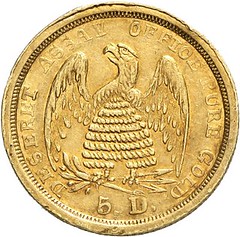
Lot 815: USA. Utah. 5 dollars 1860. Issued by the Mormons, Salt Lake City. Fb. 59. Very rare. Very fine to extremely fine. Estimate: 35,000,- euros
Lot 873: RUSSIA. Peter III, 1762. 10 roubel 1762, St. Petersburg. Diakov 1 (R3). Very rare. Extremely fine. Estimate: 60,000,- euros

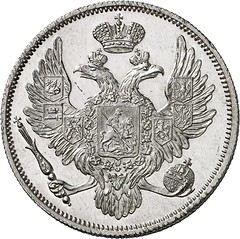
Lot 931: RUSSIA. Nicholas I, 1825-1855. 6 roubel platinum 1834, St. Petersburg. Bitkin 60 (R3). Only 11 specimens struck. With expertise of Igor Shiryakov, State Historical Museum Moscow. Proof. Estimate: 100,000,- euros
Lot 1055: RUSSIA. Nicholas II, 1894-1917. 37 1/2 roubel (100 francs) 1902, St. Petersburg. Bitkin 315 (R2). Only 225 specimens struck. With expertise of Igor Shiryakov, State Historical Museum Moscow. Extremely fine. Estimate: 75,000,- euros
ALASKA SALMON CONTRACTOR TOKENS: AH KING
Alaska and gold run hand in hand. Much has been written about the stampedes to Alaska for gold in the early days, rekindled today by modern real-life television series. But until the development of the massive Alaskan oil reserves in the 1970s, fishing and the dirty work of butchering and canning salmon was the number one money-making industry in Alaska. Simply put, Alaska’s fish feed the world, and have for centuries.
Collecting Alaska tokens can be very different from collecting tokens from other regions in America. One example is the Alaska fisheries cannery tokens. There are tokens known from 25 different cannery companies from 23 different Alaska towns, some in a variety of denominations. An additional six cannery companies issued paper tokens. Curiously, there are also associated fisheries and clam companies that issued metallic tokens, which account for seven more different companies.
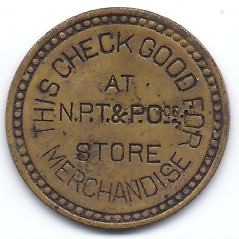
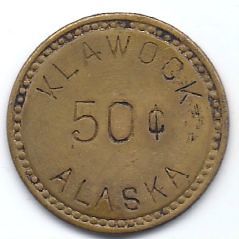
Some of these tokens are among the most desirable of all Alaskan tokens and bring very high prices. A 50c token from the North Pacific Trading and Packing Company’s Klawock cannery sold for $3,150.00 in October, 2013, an extremely high sales price for an Alaskan token without a gold nugget. Interestingly, this token is one of the very few tokens from Alaska with incuse lettering.
Commercial fishing in Alaskan waters has gone on for millennia. Fish and furs from the northern region were in great demand from both sides of the Pacific Ocean. The need for fish as food to feed the appetites of Russia, Asian countries, and the Americas is an international political problem. Fishing fleets found the rich Alaskan waters and began harvesting their catch. The easiest way to preserve the fish was at first through salting. As technology improved, canneries came into play, necessitating factories and a labor force that did not exist in the remoteness of Alaska. Indeed, anything on two legs was mining gold.
A labor system developed over time involving labor contractors, usually Asian, who supplied workers to the fish factories. The tokens of one such contractor, Ah King, have been misidentified for some time.
Ah King, a well-known Chinese labor contractor, immigrated to the United States in 1877 and worked as a water boy during construction of the Central Pacific Railroad. By being very frugal, he was able to start his own business in Seattle dealing with general merchandise, herbs, and imported items. His business place soon became a center for Chinese men looking for work. At this time he had six contracts with Alaska canneries.
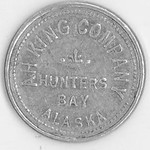
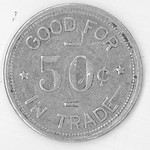
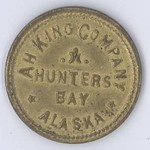
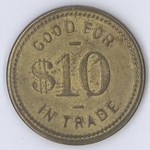
One cannery he had a contract with was the Hunters Bay cannery in Southeast Alaska. He issued tokens for use at this cannery in the denominations of 10c, 25c, 50c and $1.00 in aluminum and $5.00 and $10.00 in brass. I assume there was a 5c piece but it is not known if any of these survived. According to Ms. Angela Yee, these were paid to the workers at the cannery site and were later redeemed in Seattle for U. S. coinage when the season ended.
Ah King was a very successful businessman and on a business trip to Sacramento in September 1915, he was found dead in his hotel room. A mystery remains as to whether it was murder or suicide. The Ah King Company continued operation by his son as evidenced by the 1916 date on the Ah King token listed under Juneau in Benice’s Alaska tokens book.
For more information on TAMS, see:
www.tokenandmedal.org
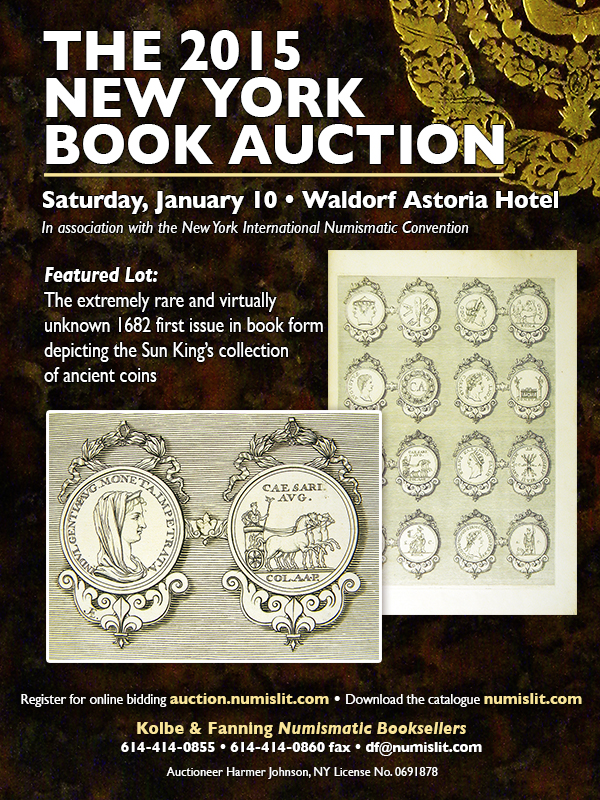
THE CZAHOR COLLECTION OF PHILIPPINES COUNTERMARKS
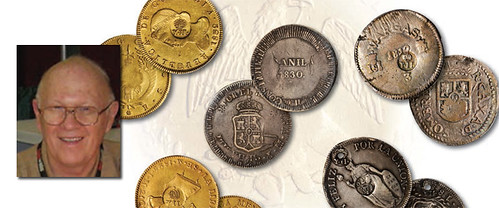
Ray started collecting coins and stamps in the early 1950s. After collecting over 5,500 world stamps, he quickly realized he hadn’t even scratched the surface, and traded all his stamps, albums, and catalogs to a couple for their United States coin collection. To this day, he has maintained his interest in U.S. type sets, Buffalo nickels, Standing Liberty quarters, Walking Liberty halves and U.S. currency.
His interest in Philippine numismatics began when he was stationed there in 1963, while a newly minted 2nd lieutenant in the United States Air Force. He was fascinated with the history of the Philippines as it moved from Spanish rule through the United States’ administration to the Philippine Republic. He was interested in the governments’ varied impact on coins, tokens, medals and currency, including during the Japanese Occupation and Guerilla/Emergency notes.
All areas of Philippine coinage had collectible interest for Ray, including the trials, patterns, varieties and low mintages that enhance the challenge of Philippine numismatics. Currently, Ray distributes an annual mail bid covering World War II books and all aspects of Philippine numismatics. He can be reached at cookiejarpi@verizon.net.
Ray purchased his first Philippine counterstamp in 1964, an 1835 Y.II C/S on an 1754 Mexican 8 Reales coin for $50 (not offered in the sale but part of his Philippine type set). He knew Pillar coins were very collectible, but with a Philippine counterstamp — wow! That purchase initiated his research into the history of these interesting coins, but little information was available in the Philippines. After returning to the United States in 1965, he found articles by Dr. P.I. DeJesus who listed several types of counterstamps.
Ray began to search through dealer lists and at tables at coin shows and slowly added a few pieces to his collection. But it wasn’t until the mid- 1980s that significant and new information was provided by Frank F. Gilboy, in an article in the June 1984 issue of the Barrilla, official publication of the Philippine Central Bank Money Museum. In the article, Mr. Gilboy explained how to date the individual counterstamps by examining the number of pearls in sequence in the crown of the counterstamp. From his examination of a number of examples, Mr. Gilboy was able to estimate the percentages of counterstamp strikings of each date.
Ray’s experience generally supports Mr. Gilboy’s estimates of the relative rarity of the date of the counterstamp. This energized Ray’s interest to find the scarcer dated counterstamps, and to start looking for them on rarer country host coins, varieties or overdated host coins, and particularly to search for higher grade host coins and counterstamps. Some countries such as Peru and Mexico provided many examples, but finding the coin and the counterstamp in VF to AU was the challenge!
Ray writes:
My reference collection of Philippine Manila, F.7o and Y.II. Counterstamps will be auctioned By Stacks in their upcoming NY International Auction on the 10th of January 2015 at the Waldorf Astoria. Many of these are absolutely RARE (including those on GOLD) and have not been on the market in years. One hundred different counterstamps are in the auction (all are encapsulated), starting with Lot 1358. Also don¹t forget to look at additional counterstamps starting at Lot 4198 in the Internet auction that probably will go quite cheaply so look for bargains there. Kyle Ponterio did an outstanding job of researching and providing lots of details on each counterstamp so review his list of references plus the table of how to date counterstamps at the beginning of the catalog.
To read the complete article, see:
The
Ray Czahor Collection of Philippines Countermarks (www.stacksbowers.com/NewsMedia/Blogs/TabId/780/ArtMID/
2678/ArticleID/64894/The-Ray-Czahor-Collection-of-Philippines-Countermarks.aspx)
PALESTINE BANKNOTES HIGHLIGHTED ROSENBLUM SALE #44
A series of highly sought-after rare Palestine lots became the marquee lots of William M. Rosenblum’s latest mail auction.
Rosenblum, one of the world’s premiere numismatists, coined his 44th mail auction “The Philadelphia Collection.” A majority of the items belonged to a Philly businessman and numismatic aficionado, whose portfolios of rarities were collected over the last 40 years. Auction 44A also showcased a variety of ancient Greek, Roman and Jewish coins, as well as specialty collection interests of Judaic and Holy Land-related material.
“Seldom seen and extremely rare. Two phrases that sum up the breadth of coins, paper money and monies found throughout the auction,” Rosenblum said. “I knew interest would be high for these rarities, and I was not wrong. Bidders and collectors showed their spirit.”
The impressive paper section including a group of Israeli banknotes including numerous trials, specimens, printers’ proofs, color trials, provisional notes and just plain rarities. There was a set of 5 fractional notes all with matching serial numbers, a very rare 100 Pruta “inverted signature” note, two different “tintype” metal trials of the proposed 1955 notes and a most astonishing group of material, including internal correspondence, from the American Bank Note Company.
Specimen notes are offered from Israel’s first five paper money issues, that is 1948, 1952, 1955, 1958-60 and 1968. “I believe that is the first time that has occurred in an American auction (and perhaps worldwide),” Rosenblum added.
Among the highlights:
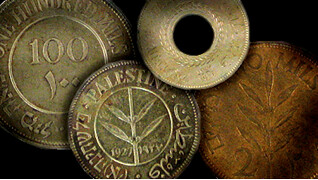 Lot 254:
Palestine. 1927 Cased Double Proof Set. KM-PS1. Bidding started at $11,000 with a final sale prices at $38,000.
Lot 254:
Palestine. 1927 Cased Double Proof Set. KM-PS1. Bidding started at $11,000 with a final sale prices at $38,000.
The extremely rare set with its original red leather case is estimated to be among one dozen sets to survive in private hands. Thirty-four sets were produced in 1927, featuring fourteen (two of each denomination) choice coins. The bronze coins are choice red, the copper-nickel coins are lustrous under light toning and the silver coins are brilliant under heavier, but attractive, toning. The red leather cover case includes a gold embossed inscription Palestine Currency Board 1927.
Lot 376: Israel. American Bank Note Company. Uniface Proofs, Process notes and internal correspondence associated with both the Anglo-Palestine and Bank Leumi issues. Sold as a group for $50,000.
Lot 410-415: Palestine Currency Board. The group of 6 Dabbah plate notes including 2 specimens and 4 printer’s proofs for all 6 denominations, were offered in one group, and sold for a final price of $205,000. Rosenblum purchased the rare, seldom seen notes from Mel and Jeremy Steinberg in January of 2003 and sold it to his Philadelphia client later that month.
The notes:
*410 Palestine, Palestine Currency Board. Dabbah Plate note. P-6cff, 500 Mils 20 April, 1939. Series L. Specimen. Cancelled perforated along lower
center of the note. Series L 500 Mil notes were never issued as circulating notes but were printed in error from old plates in 1948. In the upper
margin is the pencil inscription HH2376 23/3/48 2335 and then in the far right corner 60C. Uncirculated but mounting trace on back. Printed in error
on 23 March, 1948 by TDLR and reported to the PCB the following month.
*411 Palestine, Palestine Currency Board. Dabbah Plate note. P-7a, PCB B2a, 1 Pound 1st September, 1927. Printer’s Proof with serial # A000000. AU, but for notations as follows. On the face in the upper margin in pencil CA 85/105 1927 and on the back in pen approved subject to amendment in script specified in Board’s letter of 7/6/27 followed by the signature of the Board’s chair, P. Ezechiel.
*412 Palestine, Palestine Currency Board. Dabbah Plate Note. P-8a, PCB B3a, 5 Pounds 1st September, 1927. Printer’s Proof with serial # A000000. On the face in the upper margin in pen is the notation approved, subject to Board’s letter of 4/8/27 followed by the signature of the PCB secretary, H. C. Ransom. AU but for small smudge on bottom margin that is mostly visible on back of note.
*413 Palestine, Palestine Currency Board. Dabbah Plate note. P-9a, PCB B4a, 10 Pounds 1st September, 1927. Printer’s Proof with serial # A000000. On the face in the upper margin in pen is the notation approved, subject to Board’s letter of 4/8/27 followed by the signature of the PCB secretary, H. C. Ransom. AU but for a few small spots on back, a barely noticeable tiny tear on bottom margin and a corner fold.
*414 Palestine, Palestine Currency Board. Dabbah Plate Note. P-10a, PCB B5a, 50 Pounds 1st September, 1927. Printer’s Proof with serial # A000000. On the face in the upper margin in pen is the notation approved, subject to Board’s letter of 4/8/27 followed by the signature of the PCB secretary, H. C. Ransom. AU but for a tiny tear in right margin and an even smaller “tic” above the “a” in “Ransom”. All 50 Pound Palestine Currency Board notes, whether issued, specimens or proofs, whether in high grade or put together with tape are extremely rare.
*415 Palestine, Palestine Currency Board. Dabbah Plate Note. P-11b, PCB B6b, 100 Pounds 30th September, 1929. Printer’s Specimen with serial # A000000. On the face in the upper right margin in pen is the notation 65/1. Unlike other specimens (see Lot above), this note is punched with 3 holes and not perforated with the word Cancelled. Dabbah speculates that 65/1 indicates the plate or print number. AU, but for some green stains indicating this was probably removed from the press before the ink was dry. Tracing of mounting can be seen on the back. All 100 Pound Palestine Currency Board notes, whether issued, specimens or proofs, whether in high grade or put together with tape are exceedingly rare.
In 1973, the Philadelphia businessman purchased his first coins from Rosenblum and quickly became a true collector. From early small-change tokens, to the famed 1927 Palestine Double Proof Set, remarkable provisional issues of 1948, among hundreds more, “The Philadelphia Collection” would still be growing, if it were not for his passing.
Rosenblum’s Spring 2015 auction will offer additional lots from “The Philadelphia Collection.”
Rosenblum has been issuing price lists and conducting auctions since 1971 and continues to be a leader in the field of Jewish and Holy Land related numismatic material. His sales do not have a buyer’s fee. For more information contact Bill Rosenblum at Bill@Rosenblumcoins.com, via phone at 720-981-0785 or visit www.rosenblumcoins.com.
Bill adds:
In addition to some of the highlights listed in the press release a few of the literature lots did exceptionally well also. For example.
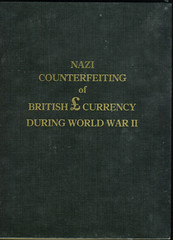 Bryan Burke's Nazi Counterfeiting of British Currency During World War II: Operation Andrew
and Operation Bernhard. Estimated at $125+ sold for $220
Bryan Burke's Nazi Counterfeiting of British Currency During World War II: Operation Andrew
and Operation Bernhard. Estimated at $125+ sold for $220
Israel’s Money and Medals. 1988. by Sylvia Haffner Magnus in exceptionally nice condition sold for $140 on a $40 estimate.
Coins of the Ottoman Empire and The Turkish Republic: A Detailed Catalogue of the Jem Sultan Collection. a two-volume cased set which at one time was in the library of Bill Spengler sold for $185 on an $125 estimate.
And Lot 471 a group of 12 auction catalogs featuring some of the best Judaic collections ever offered from the 1970s and 1980s estimated at $150 brought $275.

NEW CANADIAN BULLION COIN SECURITY FEATURES
The Royal Canadian Mint’s 2015-dated Gold Maple Leaf bullion coins will include a new security enhancement which will give the coins a new appearance. A complex radial line finish has been added across the background fields of both the obverse and reverse design.
The same enhancement had been added to the Silver Maple Leaf starting with the 2014-dated issue, providing a much different and distinct look for the popular bullion issue. In a previous post, I had showcased some images of a 2014 Silver Maple Leaf that I had received in hand.
The second security feature is a micro-engraved laser mark present on the reverse of each coin. The mark consists of a textured maple leaf image with two digits placed at center representing the last two digits of the date of the coin.
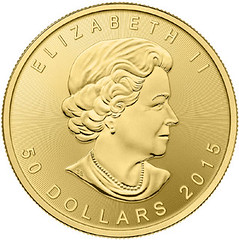
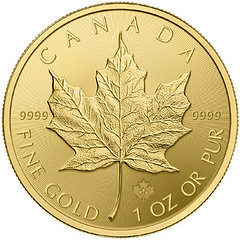
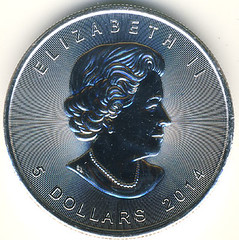
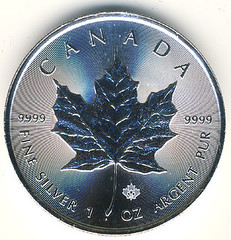
To read the complete articles, see:
New Look for Canadian Gold Maple Leaf
Bullion Coins (http://world.mintnewsblog.com/2014/12/new-look-for-the-canadian-gold-maple-leaf-bullion-coins/)
2014 Silver Maple Leaf Bullion and Reverse
Proof Finishes (http://world.mintnewsblog.com/2014/02/2014-silver-maple-leaf-bullion-and-reverse-proof-finishes/)
THE EVOLVING EFFIGY OF QUEEN ELIZABETH

You’ll find that there have been three royal coin portraits created since decimalisation in 1971.
There have, in fact, been four coin portraits of Her Majesty since she became Queen, if we include the pre-decimal period. The 2015 coin designs will be the last to bear the current royal effigy first introduced in 1998. So this seems a good moment to look back at the beautiful portrayals of Her Majesty that have graced the coins of her realm so far.
The first royal effigy of Queen Elizabeth’s reign – 1953-1967 by Mary Gillick
 The 25-year-old Queen came to the throne in 1952, but no coins bearing her effigy were
struck that year. The first Queen Elizabeth II UK coins were struck in 1953 and bore Mary Gillick’s head and shoulders portrait of the young monarch
wearing a laurel wreath. Fresh and evocative, it reflected the optimistic, post-war mood of the nation beautifully. Mary Gillick, a sculptor from
Nottingham, beat 16 other artists in competition for the honour of this commission. Her uncrowned portrait is the only one of the four still struck
today – it continues to grace the Maundy Money distributed each year by Her Majesty and has also appeared as a cameo on British commemorative stamps
since 1966.
The 25-year-old Queen came to the throne in 1952, but no coins bearing her effigy were
struck that year. The first Queen Elizabeth II UK coins were struck in 1953 and bore Mary Gillick’s head and shoulders portrait of the young monarch
wearing a laurel wreath. Fresh and evocative, it reflected the optimistic, post-war mood of the nation beautifully. Mary Gillick, a sculptor from
Nottingham, beat 16 other artists in competition for the honour of this commission. Her uncrowned portrait is the only one of the four still struck
today – it continues to grace the Maundy Money distributed each year by Her Majesty and has also appeared as a cameo on British commemorative stamps
since 1966.
The second royal effigy – 1968-1984 – by Arnold Machin RA
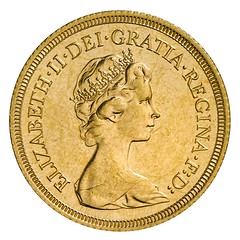 With decimalisation of the British currency planned for 1971, it was decided to refresh
The Queen’s coin portrait. Arnold Machin’s sculpture had, in fact, been chosen and approved by The Queen as early as June 1964. Born in Stoke, Machin
had worked with Derby, Minton and Wedgwood ceramics in his early career. He was made a Royal Academician in 1956 and was awarded the OBE in 1965. His
design made its first appearance in 1968 on the 5p and 10p coins, the first of the ‘new’ coins that were able to circulate alongside the ‘old’ coins
due to the equivalent pre-decimal values of the shilling and florin.
With decimalisation of the British currency planned for 1971, it was decided to refresh
The Queen’s coin portrait. Arnold Machin’s sculpture had, in fact, been chosen and approved by The Queen as early as June 1964. Born in Stoke, Machin
had worked with Derby, Minton and Wedgwood ceramics in his early career. He was made a Royal Academician in 1956 and was awarded the OBE in 1965. His
design made its first appearance in 1968 on the 5p and 10p coins, the first of the ‘new’ coins that were able to circulate alongside the ‘old’ coins
due to the equivalent pre-decimal values of the shilling and florin.
The third royal coin effigy – 1985-1997 – by Raphael Maklouf
 Like Machin, Raphael Maklouf was working as a sculptor when he was commissioned to
undertake what was to be his first coin design. His ‘couped’ portrait depicts The Queen wearing the royal diadem that she favours for the journey to
and from the State Opening of Parliament each year. It has been said that he shows Her Majesty as somewhat younger than her then 58 years, but it was
Maklouf’s avowed intention to produce a ‘regal and ageless symbol’ – and who could say he did not succeed in that?
Like Machin, Raphael Maklouf was working as a sculptor when he was commissioned to
undertake what was to be his first coin design. His ‘couped’ portrait depicts The Queen wearing the royal diadem that she favours for the journey to
and from the State Opening of Parliament each year. It has been said that he shows Her Majesty as somewhat younger than her then 58 years, but it was
Maklouf’s avowed intention to produce a ‘regal and ageless symbol’ – and who could say he did not succeed in that?
The current royal coin effigy – 1998-to date – by Ian Rank-Broadley FRBS
 The current depiction of The Queen on British coins was created by sculptor Ian
Rank-Broadley FRBS, and chosen in competition with ten other artists. Working from photographs, he was granted two sittings by Her Majesty to refine
his final design. Conscious that the coinage was getting smaller as the 5p, 10p and 50p coins had been reduced in size, Rank-Broadley deliberately
made the image as large as possible within the framework of the coin’s outer edge. Commenting on his noticeably more mature portrayal of Her Majesty
in an interview with The Times newspaper he responded “There is no need to flatter her. She’s a 70-year old woman with poise and bearing. One doesn’t
need to see a rather distant mask.” His ‘strong and realistic’ portrait could also be viewed as a return to a more traditional design following the
idealistic style of its predecessor and the boldness of the Gillick portrait 50 years previously.
The current depiction of The Queen on British coins was created by sculptor Ian
Rank-Broadley FRBS, and chosen in competition with ten other artists. Working from photographs, he was granted two sittings by Her Majesty to refine
his final design. Conscious that the coinage was getting smaller as the 5p, 10p and 50p coins had been reduced in size, Rank-Broadley deliberately
made the image as large as possible within the framework of the coin’s outer edge. Commenting on his noticeably more mature portrayal of Her Majesty
in an interview with The Times newspaper he responded “There is no need to flatter her. She’s a 70-year old woman with poise and bearing. One doesn’t
need to see a rather distant mask.” His ‘strong and realistic’ portrait could also be viewed as a return to a more traditional design following the
idealistic style of its predecessor and the boldness of the Gillick portrait 50 years previously.
To read the complete article, see:
The Evolving Effigy of Queen Elizabeth
(http://blog.royalmint.com/the-portraits-of-the-queen/)
COMMEMORATIVE MEDAL SELECTIONS FROM BALDWIN'S
1688 Antichristian Confederacy
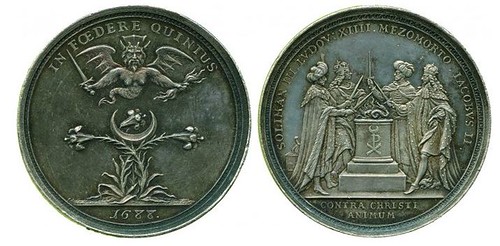
James II (1685-1688), Antichristian Confederacy 1688, Silver Medal by J Smelzing, standing figures of Suleyman III of Turkey, Mezzo Morto of Algiers, Louis XIV and James II swear an oath of allegiance around an altar, SOLIMAN III. LUDOV: XIIII. MEZOMORTO. IACOBVS II., in exergue CONTRA CHRISTI ANIMUM, rev an imp wearing a Jesuit’s cap, hovering above lilies and a crescent, brandishes a sword and thunderbolt, IN FOEDERE QUINTUS, in exergue 1688, 37mm (Eimer 295; MI i 632/54). Extremely fine, rare.
For more information, see:
Antichristian Confederacy, 1688.
(www.baldwin.co.uk/antichristian-confederacy-1688.html)
1797 Battle of Cape St Vincent
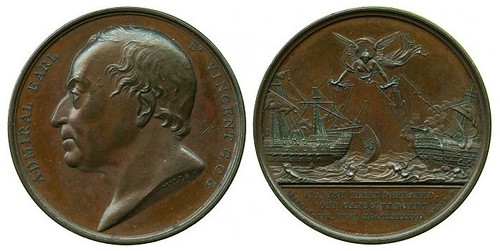
George III (1760-1820), Battle of Cape St Vincent 1797, Bronze Medal by G Mills, bust left, ADMIRAL EARL ST VINCENT G C B, rev Victory hurls thunderbolts at Spanish ships, SPANISH FLEET DEFEATED OFF CAPE ST VINCENT XIV FEBY MDCCLXXXXVII, 41mm (BHM 438; Eimer 882; MH 1919, 452; Mudie 4). Extremely fine.
For more information, see:
Battle of Cape St Vincent, 1797.
(www.baldwin.co.uk/battle-of-cape-st-vincent-1797-7276.html)
1799 Siege of Acre
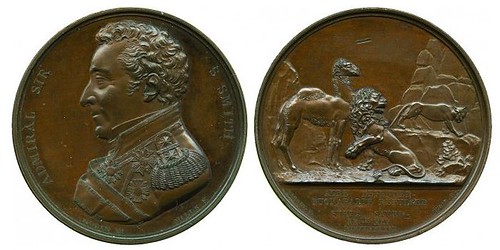
George III (1760-1820), Siege of Acre 1799, Bronze Medal by G Mills / B Brenet, struck 1820 as part of Mudie’s series of British Victories, bust left, ADMIRAL SIR S SMITH, rev in exergue ACRE DEFENDED. BUONAPARTE REPULSED SYRIA SAVED XXTH MAY MDCCLXXXXIX, 41mm (BHM 476; Eimer 906; MH 1919. 545; Mudie 7). Extremely fine.
For more information, see:
Siege of Acre, 1799. (www.baldwin.co.uk/siege-of-acre-1799.html)
THE BOOK BAZARRE
DATING THOMAS GEORGE MIDDLEBROOK'S TOKENS
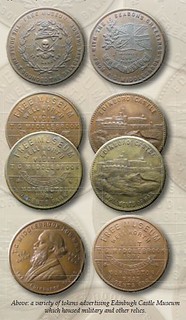 I write in reply to your mention in E-Sylum of David Young's article in Coin News, concerning Thomas Middlebrook. It is my belief that three of
Middlebrook's four tokens can be approximately dated from newspaper articles recording the purchase of the various items mentioned on them.
I write in reply to your mention in E-Sylum of David Young's article in Coin News, concerning Thomas Middlebrook. It is my belief that three of
Middlebrook's four tokens can be approximately dated from newspaper articles recording the purchase of the various items mentioned on them.
I believe that the earliest one is that depicting the castle, before he acquired the five auks' eggs, the Chesapeake flag and the Balaclava bugle which seem to loom large as the centrepieces of his collection. The Windsor, Pembroke, Edinburgh and Dublin Castles were four public houses set up in different parts of 19th cent Camden, initially for the purposes of keeping apart the different groups of English, Welsh, Scottish and Irish navvies, respectively, who were at that time building the railways of North London, and between whom there was frequent racial tension, especially when under the influence of alcohol. Middlebrook was a publican by profession, first and foremost, from at least the date of his marriage {1874} until his death.
The electoral registers confirm 1879 as being the likely year of his arrival at the Edinburgh Castle, probably from Southwark, but I am not wholly convinced that the museum was active that early. It may be, for example, that Middlebrook did not progress his antiquarian interests seriously until after the death of his wife in 1887, when he might have been looking for some alternative activity to occupy his mind. The date on the castle piece could be intended as a foundation date, to convey a sense of longer establishment for the museum than was actually the case.
Middlebrook developed an obsession with the eggs of the Great Auk, a species of bird which went extinct in the mid-19th cent. There were only about 75 known eggs in existence and Middlebrook reputedly had it as an ambition to acquire ten of these. In the eventuality, he got five, four of which {believed to be the first four} were acquired at auction in London in April 1895, April 1897, July 1897 and July 1899 at a cost of 180, 280, 160 and 300 guineas respectively. Piece 2, in which Middlebrook's head combines with the original reverse, mentions one of these eggs, and was probably issued to celebrate its acquisition; hence probably 1895. The Victorian Jubilee piece is no.3 in the sequence, not the last; the price of the egg is stated on the piece as being 280 guineas, and hence relates to that acquired in April 1897.
"Last in sequence is the piece which mentions the flag and bugle for the first time, as well as an unspecified auk's egg, said to be "the largest egg in the world". This probably means the 300 guinea one acquired in April 1899, although this is not certain. Regarding the other items, the Balaclava bugle was not acquired until March 1898; until his death in 1893 it was the property of Trumpet-Major Henry Joy, the soldier who originally sounded it in the Crimea all those years before. I do not know exactly when the Chesapeake flag was purchased, but an American newspaper suggests that it was in 1899. The likelihood is that piece 4, with its Christmas message, was issued near the end of that year."
Middlebrook's activities seem to go quiet after the end of 1899, probably because his ambition was outstripping his ability to finance and accommodate them. When he died, his assets amounted to only £811, just a little more than he had paid for the bugle. It is likely that he was in serious debt, and that most of his estate went into paying it off. The largest egg and the bugle both made substantial losses when auctioned in 1908, although the American interest in the Chesapeake flag ensured that one item, at least, attracted lively bidding. There were doubts expressed in the press at the time over whether some of the items, particularly the bugle and four of the auks' eggs, were genuine.
There is an article on Middlebrook and his museum in the Harmsworth London Magazine, Vol.3, p.396-400, written in November 1899. His bidding at auction was sometimes considered outrageous, and attracted the attention of the press on a number of occasions; in consequence of which there are also quite a number of references in the British Newspaper Archive http://www.britishnewspaperarchive.co.uk/ . One American author, George Webb Appleton, even wrote him into a novel: http://gutenberg.spiegel.de/buch/das-halsband-des-kaisers-7426/13
To read the earlier E-Sylum article, see:
EIGHTEENTH CENTURY LONDON MUSEUM TOKENS (www.coinbooks.org/esylum_v17n51a19.html)
NO SOLUTION FOR CHANGING CENT COMPOSITION
The Treasury Department released a report last week -- its biannual report on coin analysis and production cost reduction. Two conclusions shine through language of the report:
- There is no alternative composition to manufacture the cent at a cost lower than face value,
- Nobody wants to change the composition of the quarter.
Everybody had an opportunity to state their opinion at a hearing last April on changing the composition of American coins. Top of the list was the American Banking Association, obviously since the banking industry is so involved with coins on a daily basis.
There were nine other industry trade associations that stated their positions. This included the vending machine industry, the coin laundry industry, parking industry, amusement and music operators. Seven hundred small and medium business had their say as well.
It also heard from a newly organized coalition -- Don't Change Our Change. (We suspect this was formed by the lobby of the zinc industry where two major manufacturers supply the copper coated zinc blanks for the manufacture of current cent coins.)
Not surprisingly, no one from a coin collecting association attended to express the position of coin collectors across the nation. While the cent is vulnerable to being eliminated, collectors of Lincoln cents are against such action. Half of other numismatists I have talked to share the same opinion.
Other numismatists, they seem to be the more advanced collectors, see the merit of killing the cent coin, recalling the elimination of the half cent in 1857. A forward thinking person would recognize the cent has lost its economic value as a circulating coin and will become even more useless in the future. One writer pointed the cent today has 1/26th the value of what the Lincoln Cent was in 1909.
But the writers of the report were charged with finding suitable metal compositions for our coins. They studied six possible metals:
- Copper-plated zinc (composition of the current cent coin).
- Tin plated on copper plated on zinc.
- Nickel-plated steel.
- Multiple plating: nickel plated on copper plated on nickel plated on steel.
- Stainless steel.
- Copper-nickel (they used the European term Cupro-nickel).
All of these were suggested as suitable compositions for the nickel coin. Two of multiple plating were also considered for the quarter.
Test criteria covered the full range of a coin's existence from metal cost, blanking, die-striking, coining, plus suitability of coins used vending machines and commerce. Each, obviously had its own characteristics. Any steel blanks, for instance, ranked low in coinability because it is so difficult to strike with normal coin relief.
The final conclusion of the report was to continue studying -- trying to seek suitable compositions.
It did not mention the obvious solution for the cent, which I have written about previously -- paper, plastic or elimination -- I favor elimination.
Next week I will report on the coin production concepts mentioned in this report. If you can't wait you can read it at: http://www.usmint.gov/about_the_mint/PDFs/2014-rd-biennial-report.pdf
ZIMBABWE ISSUES NEW BOND COINS
 Special coins issued by Zimbabwe's central bank have gone into circulation in the run-up to Christmas.
Special coins issued by Zimbabwe's central bank have gone into circulation in the run-up to Christmas.
Zimbabwe abandoned its currency in 2009 due to hyperinflation and mainly uses the US dollar and South African rand.
But with very few coins for these currencies in circulation, shoppers are given change in sweets or pens.
The central bank governor said there were no plans to reintroduce the Zimbabwean dollar and the new coins would be pegged to the US dollar.
John Mangudya said $10m (£6.3m) worth of bond coins - in one cent, five cent, 10 cent and 25 cent denominations - had so far been distributed to banks.
"Through the introduction of change in small denominations we are expecting to see self price corrections," Mr Mangudya is quoted by The Herald as saying on Thursday.
To read the complete article, see:
Zimbabwe economy: New coins in circulation for Christmas
(www.bbc.com/news/world-africa-30554000)
The coins, referred to as “Bond coins” are produced in denominations of 1, 5, 10 and 25 cent values with a fifty cent coin expected to be released into circulation in mid-2015. The coins are supposedly backed by a “Bond” from which they derive their name from – with a US$50 million bond coin facility that the Reserve Bank claim they have arranged for the purpose of providing the coins with intrinsic value. The need for the coins were two-fold, first, due to the chronic shortage of coins and prompting businesses and shopkeepers to give out pieces of candy as change or to round up or down to the nearest Dollar; and two, as a deal with the US treasury to transport a substantial value of US coins to the sanction-ridden country fell through, the Reserve Bank decided to produce their own coins. Commissioned from the South African Mint, the coins are expected to make up about 2% of the Southern African economy – which has seen its GDP decreasing year for year for at least the last two decades.
The bond coins were unveiled by the Reserve Bank’s Governor, John Mangudya who commented that the circulation of the coins would be limited to Zimbabwe and would only have legal tender status within the country, further adding that the coins would be equal in value to US cents, trading one for one. Mangudya also stressed that the bond coins would therefore “be a good store of value” and encouraged the public to accept the coins in daily transactions since consumers and businesses would be able to exchange the coins for paper money at their banks.
The initial amount of Bond coins to be made available will be US$10 million which is scheduled to be released into general circulation between December and March 2015.
Under normal circumstances, the proportion of coins to money in circulation in an economy is between 20 to 25% but with the initial release of the Bond coins during this time-frame, the overall percentage of coins is expected to equal about 2%. As Zimbabwe is in reality a Dollarized economy, the country in practice uses an array of currencies such as the British pound, South African rand, Botswana pula, Japanese yen, Chinese yuan, Indian rupee and the Euro. With an increased level of the Bond coins entering circulation, it is expected that the ratio of coins to banknotes will increase to just under below 10% of total bank deposits.
Michael Alexander wrote:
I’m not sure if my article put fourth my own disdain for the Zimbabwean government who – has systematically pieced apart a once thriving and expanding economy in just fhe first decade or so in power – with so much going for it which ZANU & Mugabe inherited from post-independent Rhodesia. They have utterly ruined a whole nation, its people and destroyed any possibility for the future of this Southern African would-be giant with the blatant corruption, dictatorship, political and civil oppression and criminal behaviour never seen in parts of the world practising democratic principles and even setting new heights for the third or developing world.
It seems to me that perhaps Mugabe at 90 years old is running out of time and of course money so… this is perhaps as it has been termed “a backdoor” method of re-introducing some kind of national currency to raise funds for his personal use or that of his wife who it seems – may be taking over for her corrupt husband. Yes, if these clueless individuals in ZANU wanted to help their citizens, they would channel funds to health care, education and other vital social services so desperately needed in the country.
My immediate advice to any enterprising Zimbabwean where the new bond coins are concerned is… assemble them as sets and offer them for sale on any number of on-line auction sites and make a little money for yourself – it may be the only light of day or use that these coins will realise.
To read the complete article, see:
Zimbabwe Introduces New “Bond Coins” into
Dollarized Economy (http://news.coinupdate.com/zimbabwe-introduces-new-bond-coins-into-dollarized-economy-4612/)

KAZAKHSTAN ISSUES NEW 1000 TENGE BILL
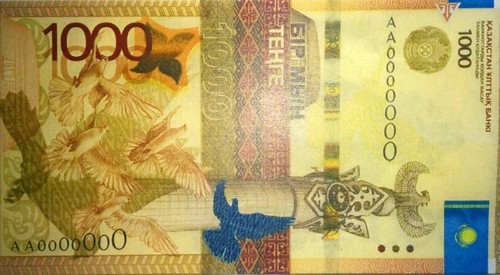
The Central Bank of Kazakhstan has issued a new 1000 tenge bill, Tengrinews reports citing a representative of the bank.
The new bill was put into circulation on December 12. “The banknote has already been put into circulation. It will be used alongside the old banknotes issued in 2006,” the representative of the Central Bank said.
The 1000 tenge bill is part of the bank's Samruk series. There are two SPARK protection elements on the new banknote. This, according to the Central Bank representative, did not change the design of the banknote. The banknote features the signature of the Head of the Central Bank of Kazakhstan Kairat Kelimbetov.
Answering a question why a lot of banknotes had been issued lately, the Central Bank of Kazakhstan explained that they had been issuing commemorative banknotes only. The Bank representative said that counterfeit notes were a rarity in Kazakhstan - one counterfeit note in one million tenge notes. In comparison, Russia has 10 to 15 counterfeit notes in one million rubles, while Europe has around 25 counterfeit notes per a million.
2000 tenge note is the most counterfeited note in Kazakhstan, he said. In Europe, € 50 is the most counterfeited note and $20 is most falsified bill in the United States.
To read the complete article, see:
Central Bank of Kazakhstan issues new 1000 bill
(http://en.tengrinews.kz/finance/Central-Bank-of-Kazakhstan-issues-new-1000-bill-257913/)
NIGERIA ISSUES COMMEMORATIVE BANKNOTE
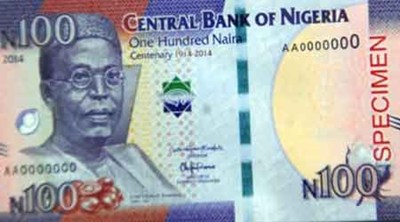
The commemorative N100 banknote unveiled recently by President, Goodluck Jonathan will officially go into circulation from Friday this week.
The commemorative note, which is embedded with features to assist the visually impaired recognise genuine notes, also has other security features easily identifiable through look, feel and tilt of the currency note.
The CBN governor had, during the unveiling of the new banknote, explained that it was designed with enhanced security to offer robust resistance against counterfeiting.
The authentication features of the note include window micro-optics, showing the national flag and numeral 100 indicating the value of the denomination and the attainment of the centenary period.
The new design retains the portrait of Chief Obafemi Awolowo both in the ink, that is the interglow level, as a portrait and also in a paper as a shadow image. In addition, there is a spark feature of a rolling manila bar, which was the instrument of transaction during the slave trade era.
At the back side of the currency is the introduced Quick Response Code (QRC), a digital communication feature that highlights and sources all the information about the centenary.
“With the QRC application, the barcode on the banknote can be scanned by users to read a brief history of Nigeria,” the CBN stated.
To read the complete article, see:
CBN: Commemorative N100
Banknote to Go into Circulation from Friday
(www.thisdaylive.com/articles/cbn-commemorative-n100-banknote-to-go-into-circulation-from-friday/196748/)
To read the earlier E-Sylum article, see:
NIGERIA ADDS QR CODE TO BANKNOTE (www.coinbooks.org/esylum_v17n48a20.html)

UGANDAN COUNTERFEITS FLOWED THROUGH PITTSBURGH
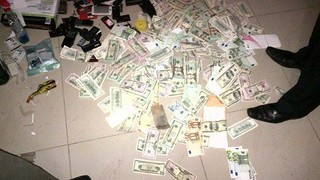 Federal authorities have charged a man with leading an international counterfeit money operation based
in the African nation of Uganda, and shipping bogus bills to the Pittsburgh area and other locations in the United States.
Federal authorities have charged a man with leading an international counterfeit money operation based
in the African nation of Uganda, and shipping bogus bills to the Pittsburgh area and other locations in the United States.
Ryan Andrew Gustafson, 27, has been charged with conspiracy to commit offenses against the United States and counterfeiting acts committed outside the U.S. “In short, these bills were being bought and sold in cyberspace,” U.S. Attorney David Hickton said Thursday, calling it “an extensive international scheme.”
Gustafson was arrested Dec. 11 in Uganda and investigators seized sophisticated printers and other equipment allegedly used to make the high-quality fake $20, $50 and $100 bills. Authorities claim he made more than $2 million in U.S. currency, most of it passed in Uganda, but about $270,000 of which was shipped to the United States.
The alleged scheme unraveled when someone passed a fake $100 bill at a Pittsburgh coffee shop last December. It was determined to be fake by bank employees after it was deposited.
Hickton and Eric Zahren, the special agent-in-charge of Pittsburgh’s U.S. Secret Service office, said investigators traced that bill to a Pittsburgh man receiving overseas shipments of bills, and further investigation determined Gustafson was shipping the bills to others in Florida, Minnesota, Texas and Washington. About $30,000 in counterfeit bills were passed in Pittsburgh and its suburbs, they said.
 The
money was glued inside charitable “Save the Children” pamphlets and, investigators contend, Gustafson used a pair of rubber gloves modeled after his
own hands to prepare the packages so he would not leave fingerprints. Despite that, Zahren said, Gustafson was eventually tied to one of the packages
by a fingerprint.
The
money was glued inside charitable “Save the Children” pamphlets and, investigators contend, Gustafson used a pair of rubber gloves modeled after his
own hands to prepare the packages so he would not leave fingerprints. Despite that, Zahren said, Gustafson was eventually tied to one of the packages
by a fingerprint.
The money shipments were also sent through a series of “re-shippers” – unidentified people who relayed the packages through the mail. When the packages were received, a person was instructed to place the pamphlets in hot water to dissolve glue and free the money.
Graziano, a former trust administrator with Bank of New York Mellon, is charged with stealing more than $2.4 million from customer accounts. He’s also charged with offering computers and other devices for sale on the online auction site eBay and then mailing customers empty packages after receiving payment for the items. When customers complained, Graziano lied and said the items were lost when U.S. Postal employees “inspected” the packages, court records show.
To read the complete article, see:
International Counterfeit Money
Operation Has Ties To Pittsburgh
(http://pittsburgh.cbslocal.com/2014/12/18/international-counterfeit-money-operation-has-ties-to-pittsburgh/)
HUNTERIAN MUSEUM MOVES
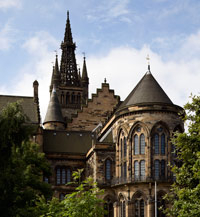 The Hunterian,
including the numismatic collections, is moving to a new location at Kelvin Hall close to its current site on the main University of Glasgow campus
at Gilmorehill.
The Hunterian,
including the numismatic collections, is moving to a new location at Kelvin Hall close to its current site on the main University of Glasgow campus
at Gilmorehill.
The Hunterian Museum was first located in the house of its founder, Dr. William Hunter (1718-1783), in Great Windmill Street, London. Bequeathed to the University of Glasgow, it arrived in 1807 on the completion of a specially designed building by William Stark on the Old College site in the city centre near the cathedral. The University vacated this in 1870 for the more pleasant surroundings of the West End where George Gilbert Scott’s magnificent gothic building was constructed on Gilmorehill. This incorporated a new museum which continues to be the centre of the Hunterian collections.
The coins and medals are the only collection still stored in the Hunterian Museum. They are kept in the Coin Room which was specifically designed and built for this purpose in the 1870s. It must be one of the earliest examples of a purpose built public coin room.
Those who have visited will recall the climb up the stone staircase, the large metal door and the huge walk-in safe. The latter leads to one of the most frequently asked questions, “How was that brought in?” – in bits and welded seems to be the answer. In this safe is housed most of William Hunter’s own collection of over 30,000 specimens, the finest collection in late 18th century Britain and, as is often quoted, “second only to that of the French king”. As part of the original fittings of a listed building the safe will stay.
The main store will hold all the Hunterian collections together with the exception of the coins and medals. A new coin room will be constructed outside this. It will consist of an inner strong-room and curatorial work space connected to a coin library on the same level where students, researchers and visitors will be accommodated. Overall the size is much the same as at present in the Hunterian Museum but the new facility will be more convenient and pleasant to work in. Staff accommodation will be on a third floor.
For more information on the Hunterian, see:
www.gla.ac.uk/hunterian/about/
For more information on the Money and medals newsletter, see:
www.moneyandmedals.org.uk/newsletter/4547094513
VIDEO: HOW BOOKS USED TO BE MADE
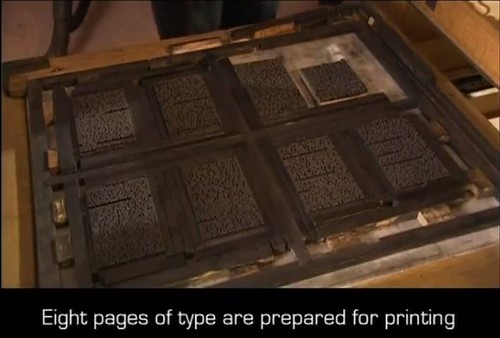
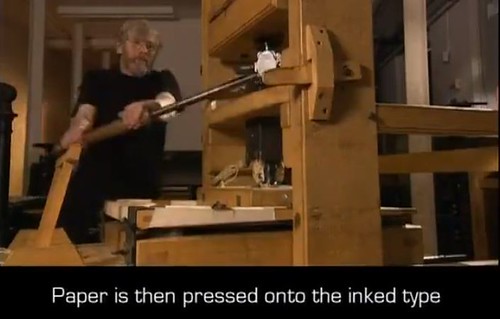
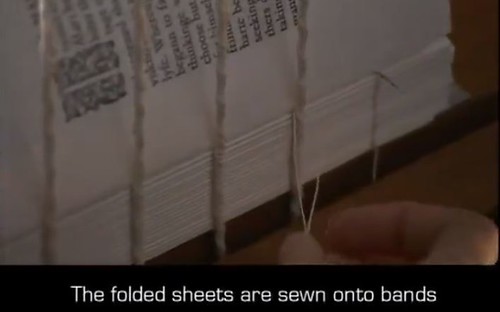
To watch the complete video, see:
How Books Used to Be Made
(https://www.facebook.com/video.php?v=10153067485459245&set=vb.96738939244&type=2&theater)
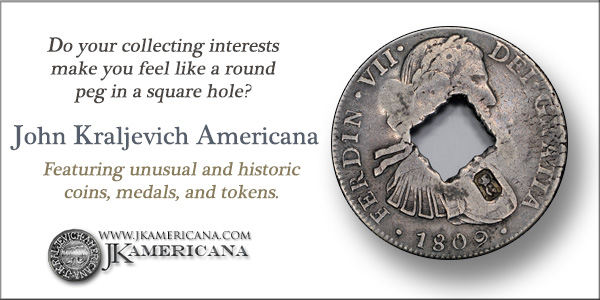
IF HANUKKAH GELT WERE REAL GOLD
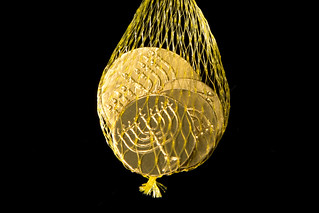 Ever
wonder how much that Hanukkah gelt would be worth if it were actually 24-karat gold and not foil-wrapped chocolate? Well, we’ve got the answer.
Ever
wonder how much that Hanukkah gelt would be worth if it were actually 24-karat gold and not foil-wrapped chocolate? Well, we’ve got the answer.
For those who don’t know, chocolate “gelt,” or money, is a traditional Hanukkah treat for children and often used in the holiday game dreidel. The dreidel is a spinning top with four sides, and depending on which side the top lands on, players get either all of the gelt in the pot, half of the pot, nothing—or have to add another piece of gelt to the pot.
But let’s get back to the question at hand. Of course, you can’t just weigh the chocolate coins and calculate the value of that weight in gold. After all—SCIENCE FACT!—a gold coin the same size as a gelt coin would weigh much more than the chocolate. (Gold is almost three times as heavy as lead by volume.)
So, instead, we found the volume of our $1.49 bag of Hanukkah gelt using the displacement method. Then, armed with the easily obtained density of gold—19.32 grams per cubic centimeter—we calculated how much gold coins of the same size as discs of Hanukkah gelt would weigh. Finally, we calculated how much a small bag (containing one large and three small coins) of real gold gelt would cost at the current market price of $38.45 per gram.
The results: All together, the one large and three small coins in our bag would be worth about $7,785. Individually, the big coin was worth $3,373 (rounded to the nearest dollar) and the three little coins were each worth about $1,471.
Happy Hanukkah!
To read the complete article, see:
How Much Would Hanukkah Gelt Be Worth If It Were Real Gold?
(http://time.com/money/3638102/hanukkah-gelt-value-gold/)
To read the earlier E-Sylum article, see:
HANUKKAH CHOCOLATE COINS (www.coinbooks.org/esylum_v17n51a29.html)
SANTA CLAUS ON U.S. CURRENCY
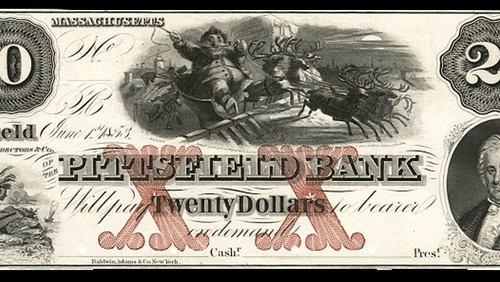
Money can be so boring. Or, at least, U.S. paper currency. Green, black, cream, some president’s head. With the holiday season upon us, there are holiday stamps, holiday checks, holiday-themed toilet paper. Would it be so horrible to have holiday-themed currency?
They didn’t think so before the U.S. Treasury stepped in to un-democratize the design of U.S. currency. Before it did that in 1861, there actually was holiday-themed currency featuring Santa Claus, and earlier versions of St. Nicholas.
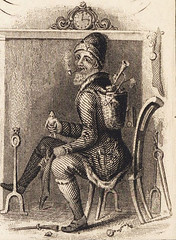 “From 1793 to 1861,
when the U.S. Treasury was given exclusive rights to produce legal tender, thousands of different styles of bank notes were created by U.S. banks,”
and prominent on some of their holiday-themed currency, a blog post from the Federal Reserve Bank of New York tells us, was Santa Claus.
“From 1793 to 1861,
when the U.S. Treasury was given exclusive rights to produce legal tender, thousands of different styles of bank notes were created by U.S. banks,”
and prominent on some of their holiday-themed currency, a blog post from the Federal Reserve Bank of New York tells us, was Santa Claus.
Santa was extremely popular back then, the post says, thanks to a.) Christmas becoming an official holiday in many Northern states, and b.) the printing in 1823 of the poem “A Visit from St. Nicholas” by Clement Clarke Moore (that was the original title; today, it's known as "The Night Before Christmas"). Here's another image of a Santa bank note from that era from, yes, Saint Nicholas Bank in New York:

To read the complete article, see:
When Santa Claus Showed Up on U.S. Currency
(www.bloomberg.com/news/2014-12-19/when-santa-claus-showed-up-on-u-s-currency.html)
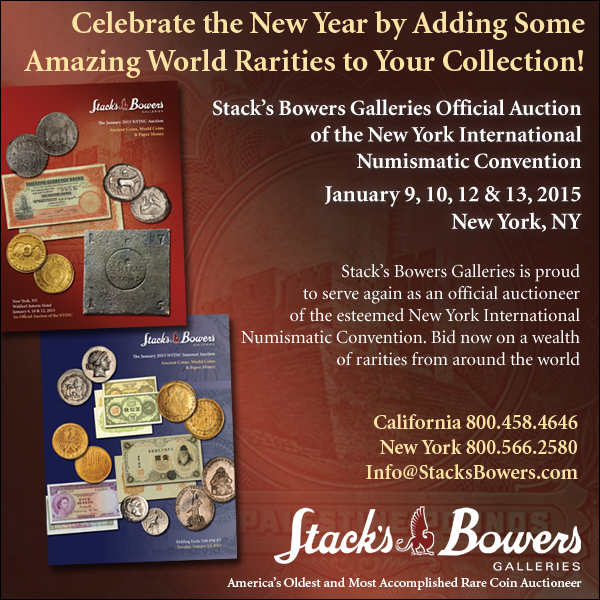
A CHRISTMAS POEM: GIVE SANTA A MEDAL
Dick Johnson writes:
To freshen up our annual Christmas poem we have a reply from Santa's reindeer, written by my associate putting the final touches on my databank, Ben Kohanski.
Give Santa A Medal.
'Twas two days before Christmas.
And my gift list complete.
Save one so important,
It had to be neat.
The gift I was missing,
The one to be handy,
For the spirit of Christmas,
So good to the family.
For the jolly ol' man,
Who arrives Christmas night.
Himself good and generous.
Choose a gift that's just right!
He travels a great distance,
To bring everyone good cheer.
What kind of a present
Would Santa hold dear?
No gingerbread houses,
No frilly white blouses.
No Hansel, no Gretle.
Give Santa a medal.
No toys to construct,
No parts to assemble.
No bicycle to pedal
Give Santa a medal.
No milk, and no cookies.
By the tree and the rest.
Give Santa a medal,
He deserves just the best.
His effort rewarded,
In a box with red bow.
Give Santa a medal.
He's our Christmas He-Ro!
M E R R Y C H R I S T M A S!
--D. Wayne Johnson
A Reply
As Santa embarked with his die-struck award,
A glittering medal fit for any king’s hoard,
The reindeer grumbled at the front of the sleigh:
“Have you any idea how much these damned things weigh?”

Archives International Auctions, Part XXI
Hong Kong 4
Rare Chinese, Asian & Worldwide Banknotes, Coins and Scripophily.
Highlights include:
- Mercantile Bank of India, 1948 Specimen Banknote Rarity
- Deutsch-Asiatische Bank, 1907 "Peking Branch" Issue Banknote
- China, 1932, $1, L & M-108 Y-344, Birds Over Junk
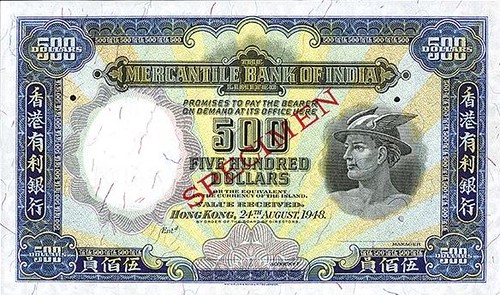
1580 Lemoine Avenue, Suite #7
Fort Lee, NJ 07024
Phone: 201-944-4800
Email: info@archivesinternational.com
WWW.ARCHIVESINTERNATIONAL.COM
FEATURED WEB PAGE: THE HUNTERIAN MUSEUM
This week's Featured Web Page is the numismatic collection of the Hunterian museum in Glasgow, Scotland.The Hunterian houses one of the world’s great coin collections, containing 70,000 coins, medals, tokens and related objects.
About half is the original collection of Dr William Hunter put together at the end of the 18th century, when it was second only in importance to the French Royal Collection. Today it is Scotland’s premier collection in this subject.
The collection contains Ancient Greek, Roman, Medieval and Modern coins as well as medals from the Renaissance to contemporary Scotland. Many of these are unique or extremely rare and most are in superb condition.
The collection is extensively used for teaching and research, and several catalogues covering its major holdings have been published.

www.gla.ac.uk/hunterian/collections/
collectionsummaries/coinsandmedals/

